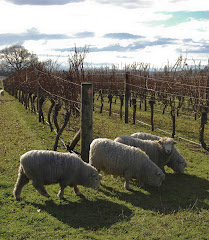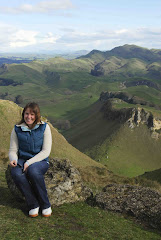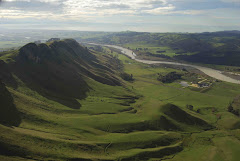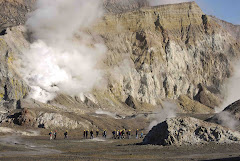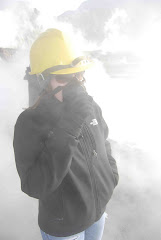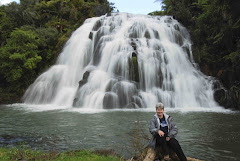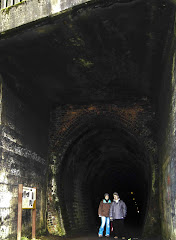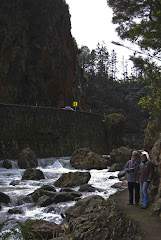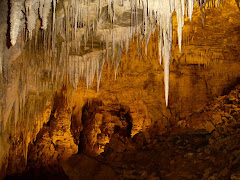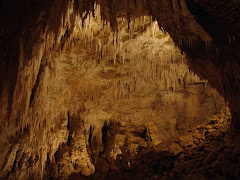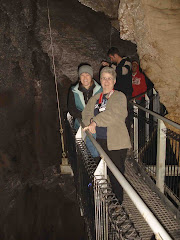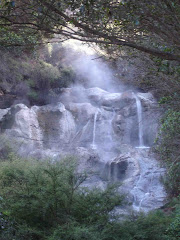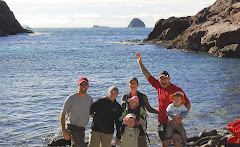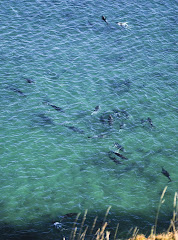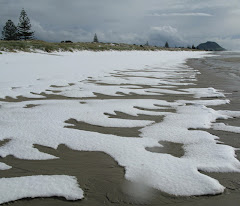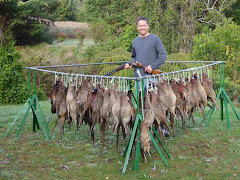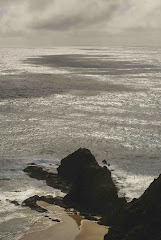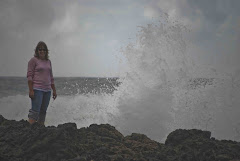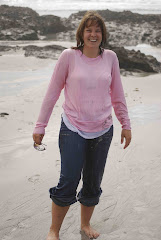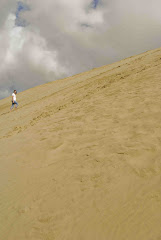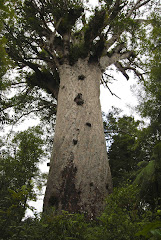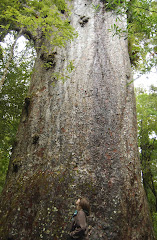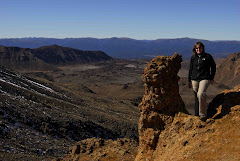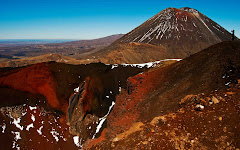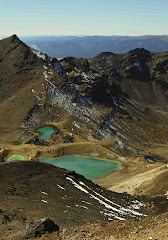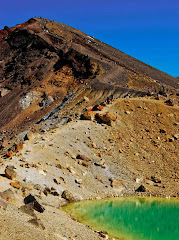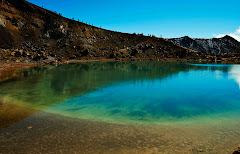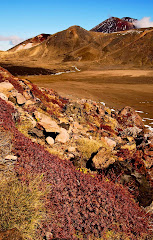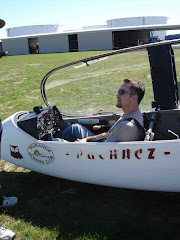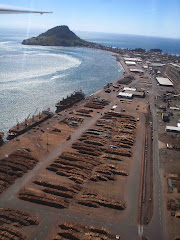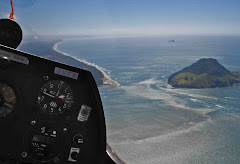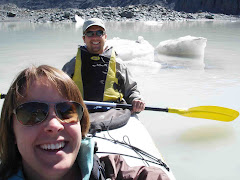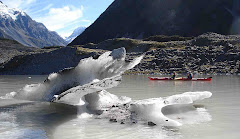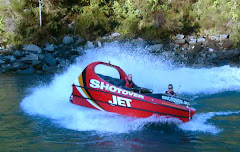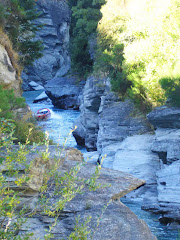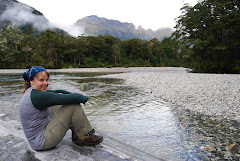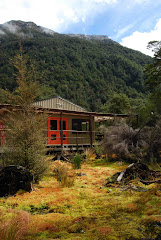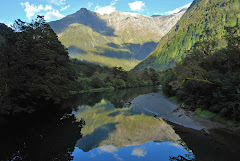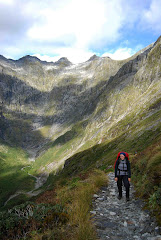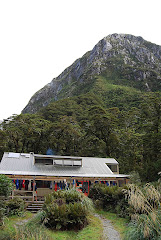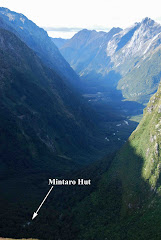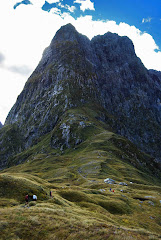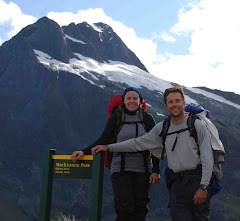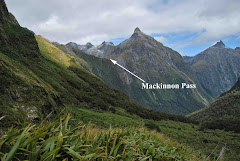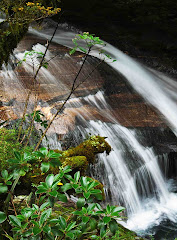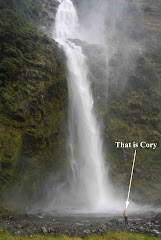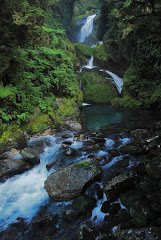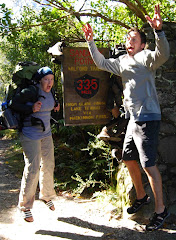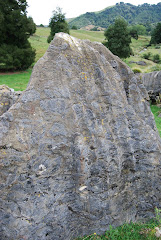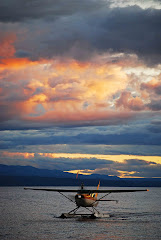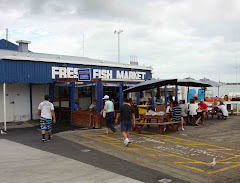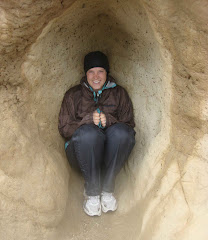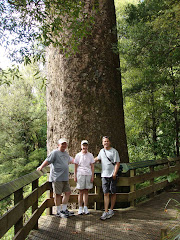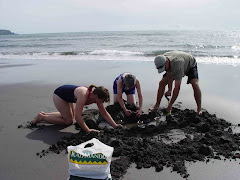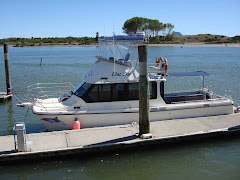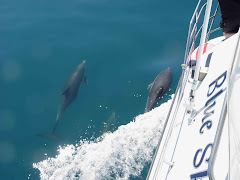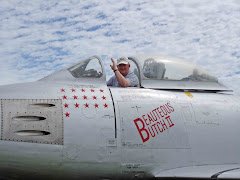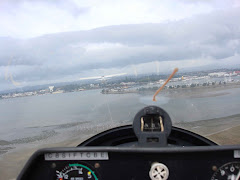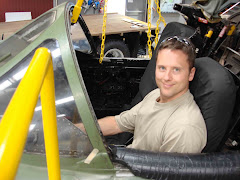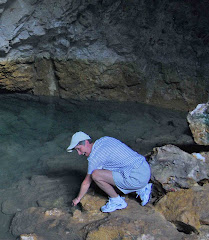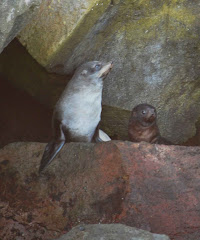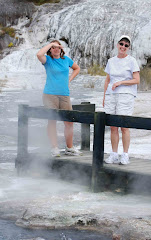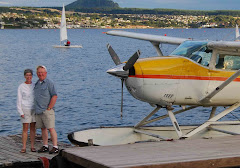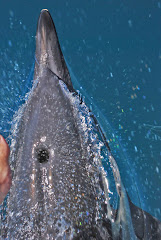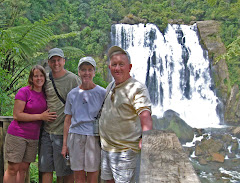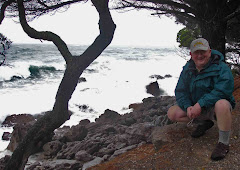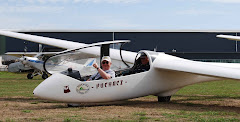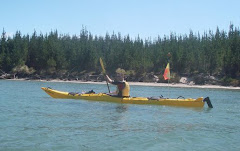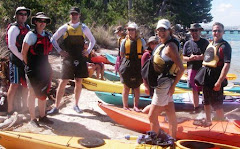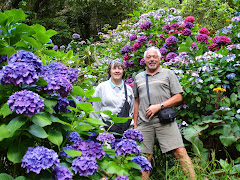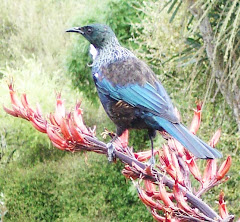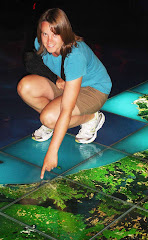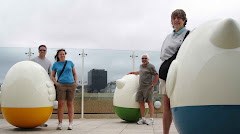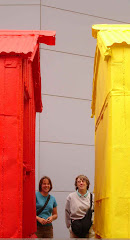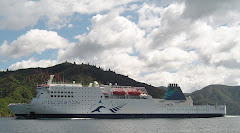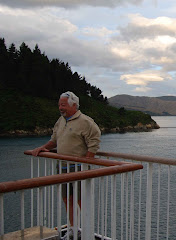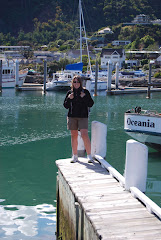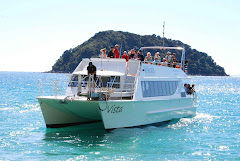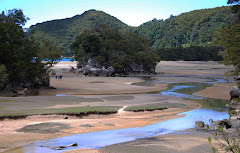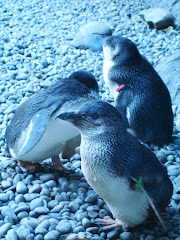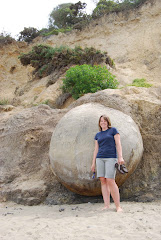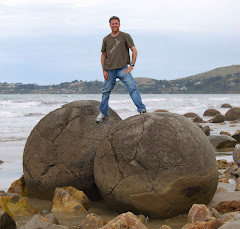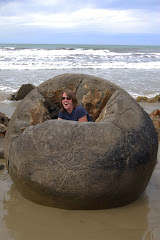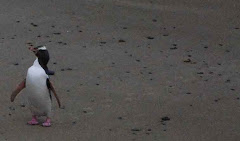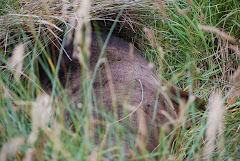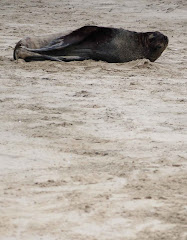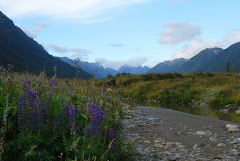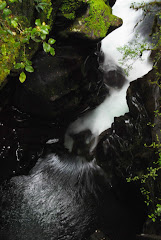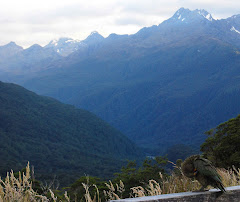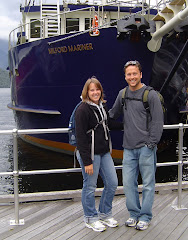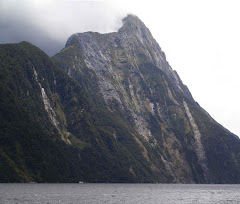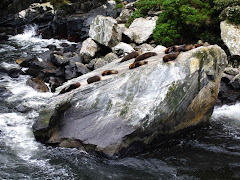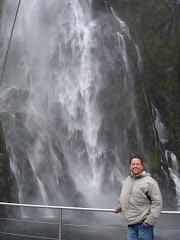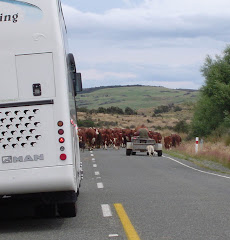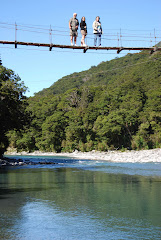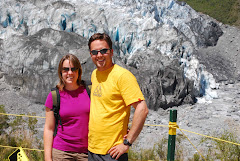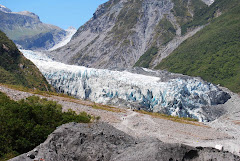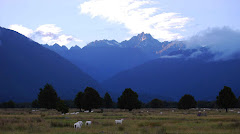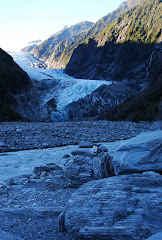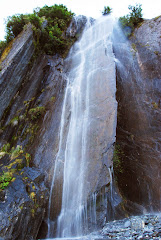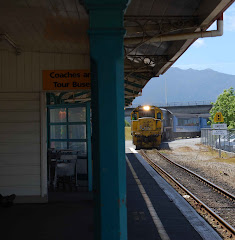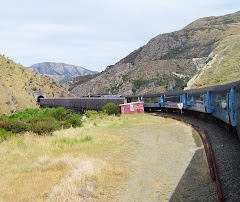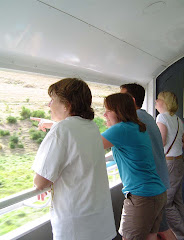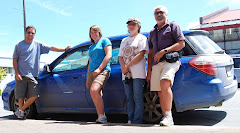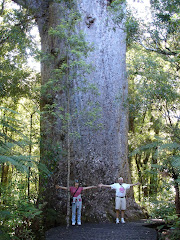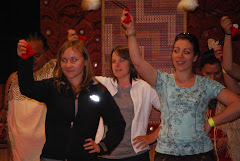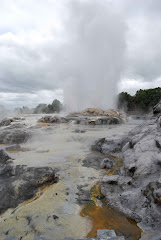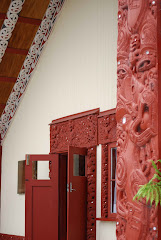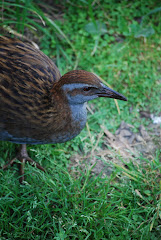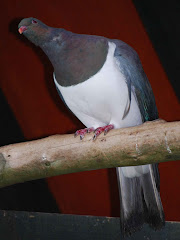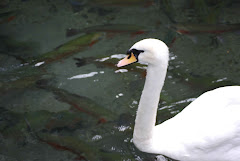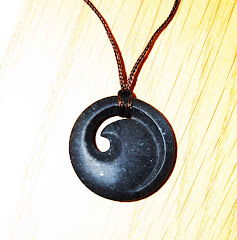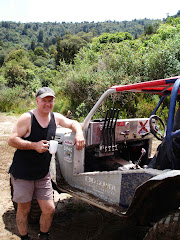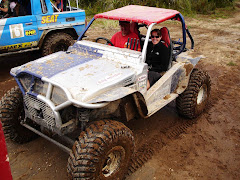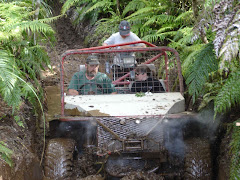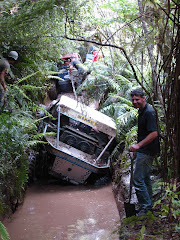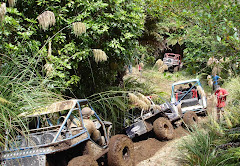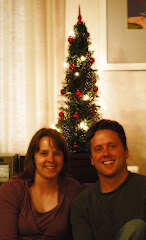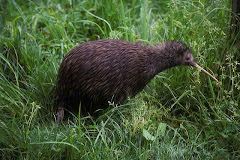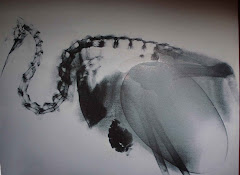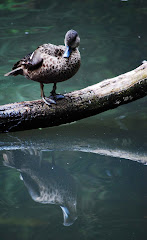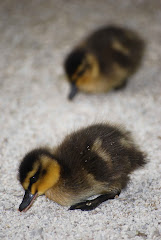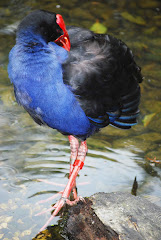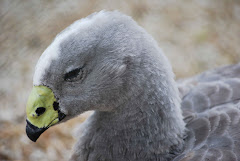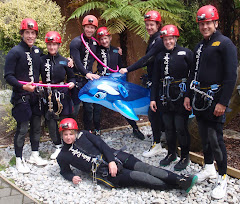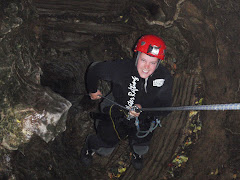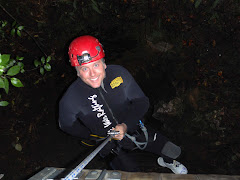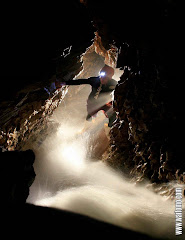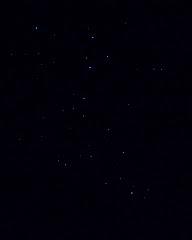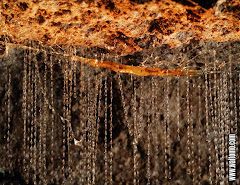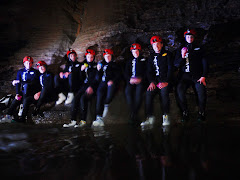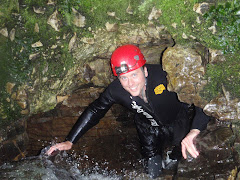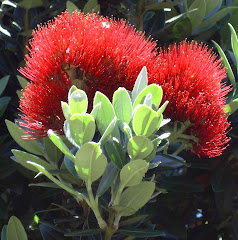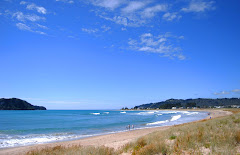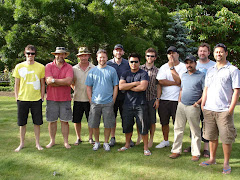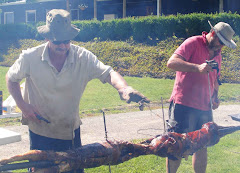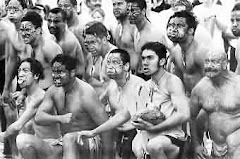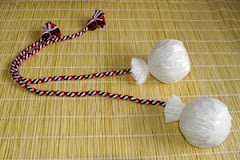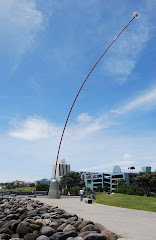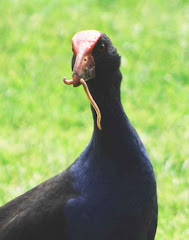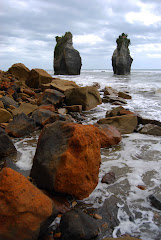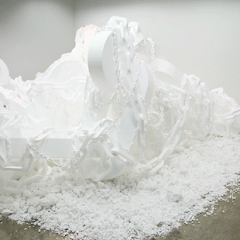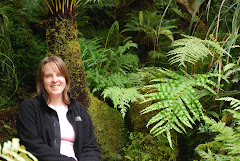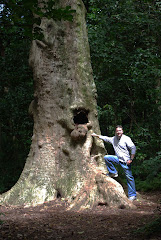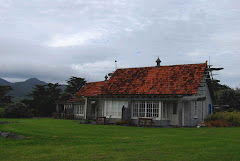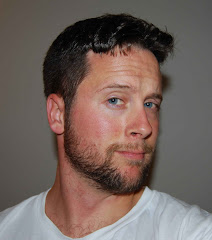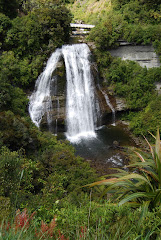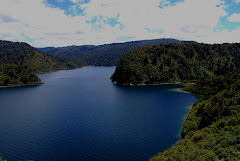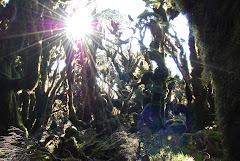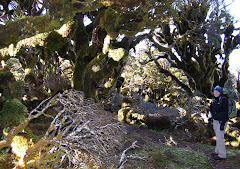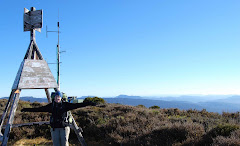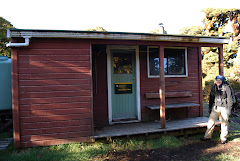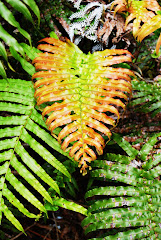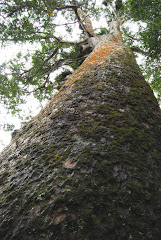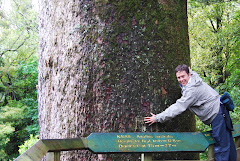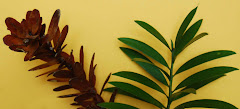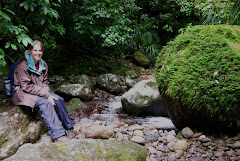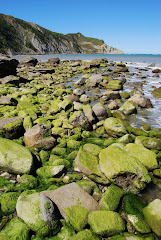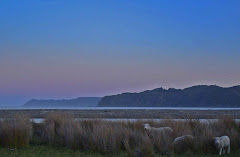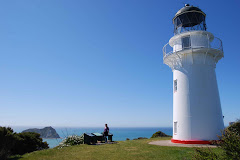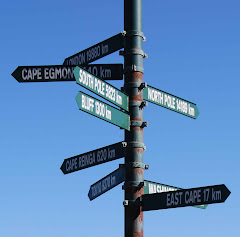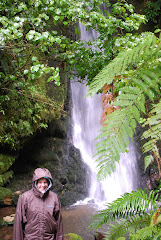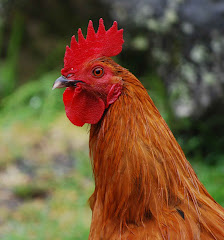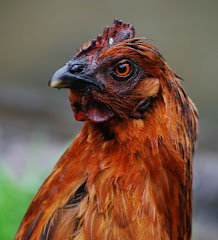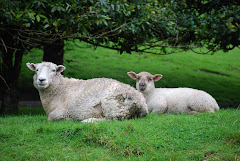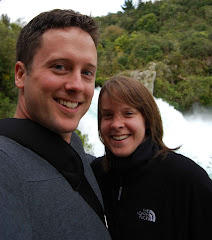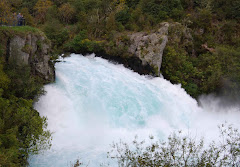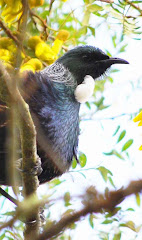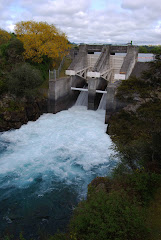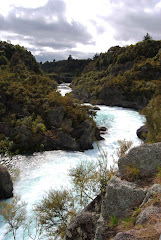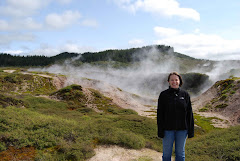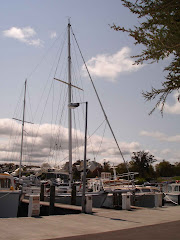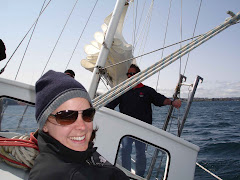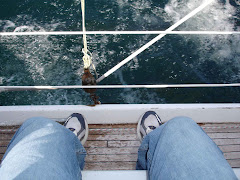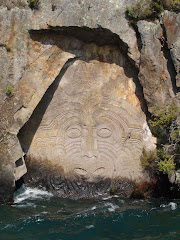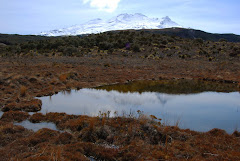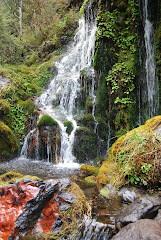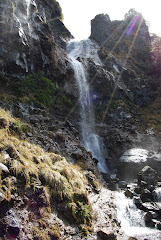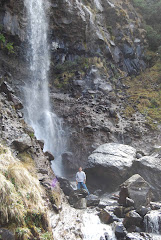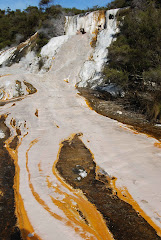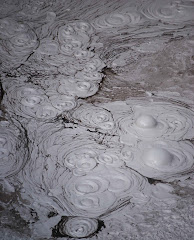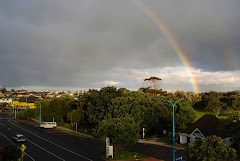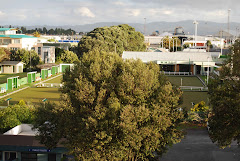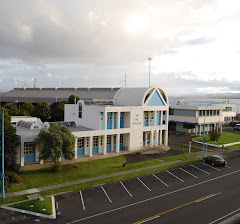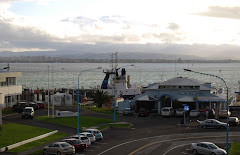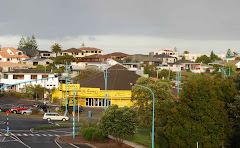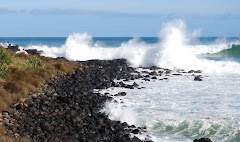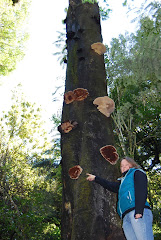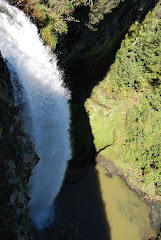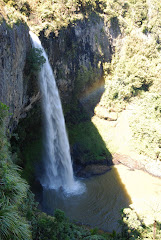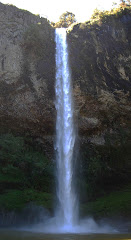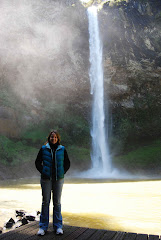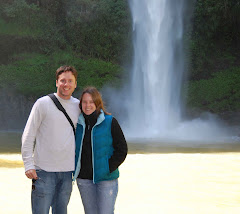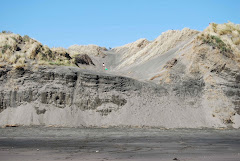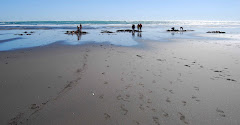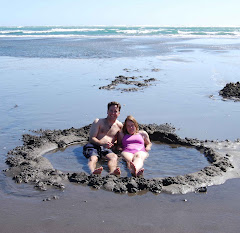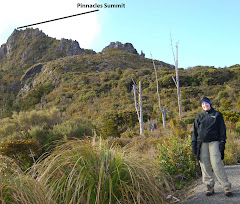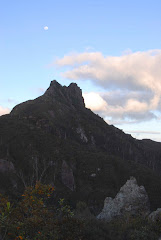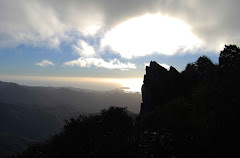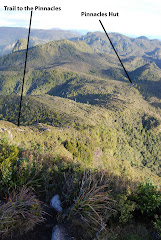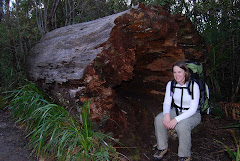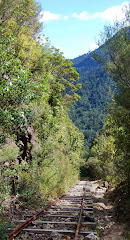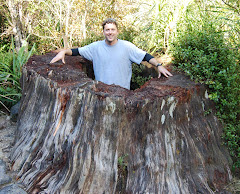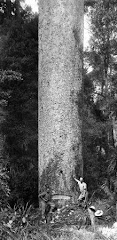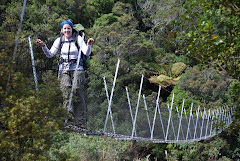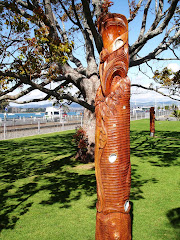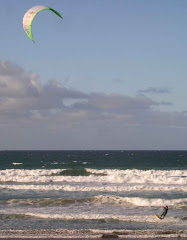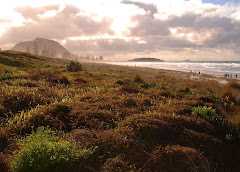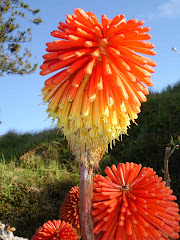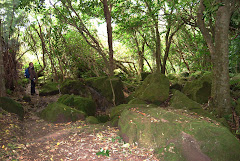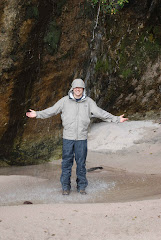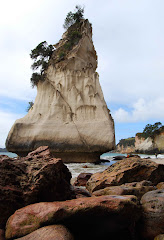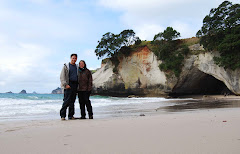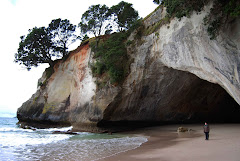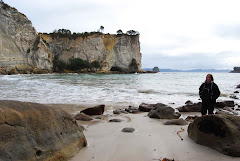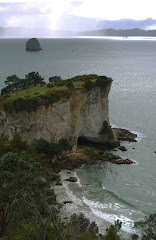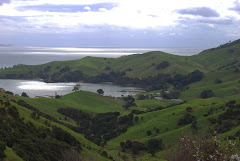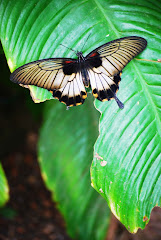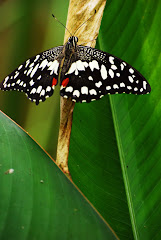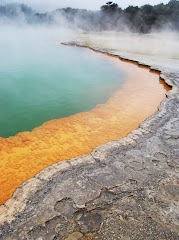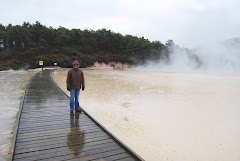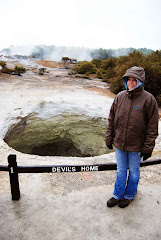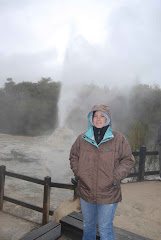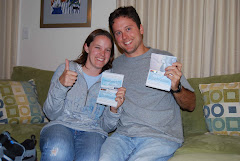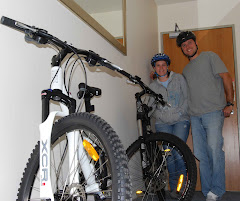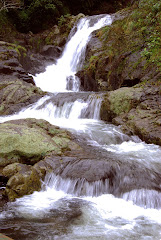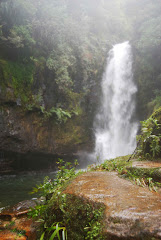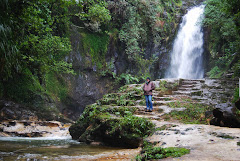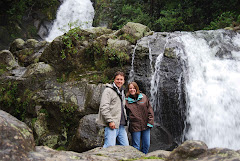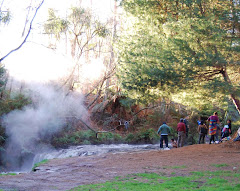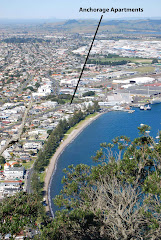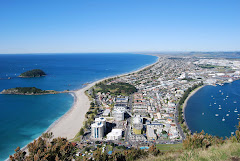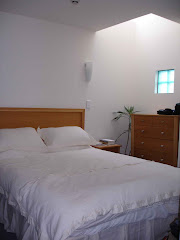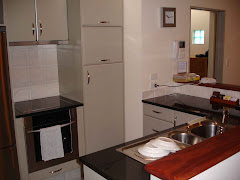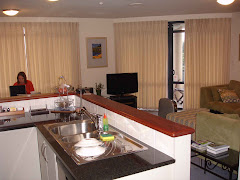Tomorrow, we are getting in the rental car and driving up to Auckland, where we’ll board a plane for LA. And, after almost a year, we will be leaving New Zealand. I have never enjoyed the departure section of airports, but I do love the arrivals section. It’s not really adequate, but I guess it sums up our feelings now…
Before we go, though, I wanted to say thank you to a few people who have made our year here the fantastic experience it was. They are a pretty varied group, but they all, through their kindness or help, made an impression.
To Dawson, Lee, Gretel, Frankie, & James; Andy, Tonya, Tom, Sam, & Annabelle; Alan, Deb, Nina, & Levi; Jason, Liz, Ethan, & Amelia; David, Belinda, & Liam; and Monique – thank you for befriending us, looking after us, and sharing your holidays with us!
To Ann & Michael; Carol; Dave & Fleur; Sharon & James; and Andy – thanks for thinking of us and opening your homes to us!
To all the students and staff at Kaka Street Special School and to the students and staff at Otumoetai College’s Special Needs Unit – thanks for giving me a purpose and opening your classrooms to me!
To all the staff and patients at Tauranga Hospital and Grace Hospital – thanks for your kindness and trust!
To Lindy, Russell, the staff and our neighbors at Anchorage Apartments – thanks for making our home a comfortable one!
To Ihaka, Jaap, & Robbie – thanks for your patient teaching!
To Razia and the local branch staff at National Bank – thanks for helping us sort out our kiwi dollars!
To the unbelievably kind staff at Bin Inn, Mount Liquor, Col’s Butchery, The Copy Shop, and The NZ Post Shop – thanks for your friendly smiles, good suggestions, and assistance!
To the editors and authors of Lonely Planet – thanks for astoundingly good advice and reliable recommendations!
To the friendly people who offered a welcoming smile when they heard our accent and wanted to know more about us – thanks for your kind interest!
And to you, dear readers – thanks for sharing this year with us!
Readers, I do have a favor to ask of you… We’d love to know who you all are. Would you please leave a comment for us, even if it is just your name? (If you aren’t sure how to do this, here are directions... Click on the underlined word “comments”, just below this post. Type any comments and your name in the text box. Click on the circle next to “anonymous”, and hit “publish your comment”.) Thanks for taking the time to do this – we hope to get to thank you in person soon!
Tuesday, July 7, 2009
A few days of wine and whine
We decided to take one last trip before we flew out, so Monday we drove down to Hawke's Bay. The area is known for its wines, so we spent the day driving around the countryside, stopping at a few wineries, and having an unbelievable platter at a cheese makers. That night we had a delicious meal at a stunning winery, Mission Estate, the oldest in New Zealand. Tuesday was sunny and beautiful, the first clear skies we've had in a few days, so we wandered the ocean front's rocky beaches and browsed the store fronts on Marine Parade. I was anxious to get back and continue packing, though, so we headed home mid-day.
This is where the whining came in. After an hour or so of carefully stacking shirts, pants, shorts, sweaters and everything else into ziploc bags and squeezing all air out of them, I was congratulating myself for having gotten a year's worth of clothes into my suitcase. It was then that the painful realization struck. There was no room for my shoes. Both Cory and I had thinned out our wardrobes, and I'd even been so brave as to whittle down my shoe collection by a few pairs. Looking at the jam-packed suitcase and, alongside it, a long row of shoes, shoved me into crisis mode - which, in my case, is a lot like intensive whining.
The crisis was averted when quick-thinking Cory promised his nearly-in-tears wife that she could ship home a box of cold-weather clothes, leaving room in her suitcase for her shoe collection. So that has been added to our to-do list, which includes other exciting tasks like closing the bank account, picking up the rental car, turning in hosptial id's, and cleaning out the frig.
We fly out Thursday, July 9th, just two weeks shy of our year's anniversary here in New Zealand. Hard to believe...
This is where the whining came in. After an hour or so of carefully stacking shirts, pants, shorts, sweaters and everything else into ziploc bags and squeezing all air out of them, I was congratulating myself for having gotten a year's worth of clothes into my suitcase. It was then that the painful realization struck. There was no room for my shoes. Both Cory and I had thinned out our wardrobes, and I'd even been so brave as to whittle down my shoe collection by a few pairs. Looking at the jam-packed suitcase and, alongside it, a long row of shoes, shoved me into crisis mode - which, in my case, is a lot like intensive whining.
The crisis was averted when quick-thinking Cory promised his nearly-in-tears wife that she could ship home a box of cold-weather clothes, leaving room in her suitcase for her shoe collection. So that has been added to our to-do list, which includes other exciting tasks like closing the bank account, picking up the rental car, turning in hosptial id's, and cleaning out the frig.
We fly out Thursday, July 9th, just two weeks shy of our year's anniversary here in New Zealand. Hard to believe...
Saturday, July 4, 2009
Erin & Brownie's Adventures
A friend from school, Brownie, spent the last two weeks with us. Friends here kept saying how disappointing it was she could only come during the winter. But as I reminded them, winter in New Zealand is pretty mild compared to winter where we're from!
Brown arrived on Monday to a four-day stretch of cool but beautiful, sunny weather. We walked around the Mount, then up the Mount on Tuesday. Wednesday, we checked out the giant kauri trees and shopped the main street. Then Thursday we took a day trip to Rotorua, which involved a walk through another great thermal area (bubbling hot pools, a mud volcano) and a visit to the kiwi hatchery. Friday we wandered the Strand over in Tauranga, where Brown found some new dishes (made here in NZ). Saturday involved the excitment offered by Kiwi360, a tour of a local kiwifruit orchard, and a trip to a beautiful local waterfall. Even more exciting was the daVinci exhibit at the Waikato Museum on Sunday. We headed back west again the next day to visit the Waitomo Caves, which were stupendous. Tuesday we had the world's best fish 'n' chips and got to see Transformers 2 from the front row. A break in the rainy weather on Wednesday made for the perfect chance to walk trails in the Karangahake Gorge. Then, after three days of postponement, on Thursday we were finally able to sai out to White Island, an active marine volcano. It was AWESOME! Friday was a lazy day, with all of us preparing for our upcoming trips home. Today we dropped Brownie off at the the airport, taking the route we'll soon be taking ourselves.
The count down is on... T minus 4 days!
Brown arrived on Monday to a four-day stretch of cool but beautiful, sunny weather. We walked around the Mount, then up the Mount on Tuesday. Wednesday, we checked out the giant kauri trees and shopped the main street. Then Thursday we took a day trip to Rotorua, which involved a walk through another great thermal area (bubbling hot pools, a mud volcano) and a visit to the kiwi hatchery. Friday we wandered the Strand over in Tauranga, where Brown found some new dishes (made here in NZ). Saturday involved the excitment offered by Kiwi360, a tour of a local kiwifruit orchard, and a trip to a beautiful local waterfall. Even more exciting was the daVinci exhibit at the Waikato Museum on Sunday. We headed back west again the next day to visit the Waitomo Caves, which were stupendous. Tuesday we had the world's best fish 'n' chips and got to see Transformers 2 from the front row. A break in the rainy weather on Wednesday made for the perfect chance to walk trails in the Karangahake Gorge. Then, after three days of postponement, on Thursday we were finally able to sai out to White Island, an active marine volcano. It was AWESOME! Friday was a lazy day, with all of us preparing for our upcoming trips home. Today we dropped Brownie off at the the airport, taking the route we'll soon be taking ourselves.
The count down is on... T minus 4 days!
Wednesday, June 24, 2009
Goodbye, continued
A few more farewells to report upon...
We had a lovely morning tea in my honor at Kaka Street School, the special ed school where I've been volunteering and subbing this year. The kids presented me with some lovely photos of the Mount and wonderful cards. That afternoon, the staff threw a little get-together in my honor - complete with a "Who Wants to be a Millionaire"-style game where I was challenged to answer questions about the students and staff of Kaka Street. I'm pleased to report I am a "millionaire"!
The weekend offered even more excitement. We went to a friends' house on Saturday night to watch the All-Blacks rugby match versus France. It was an intense game, with the All Blacks coming up with the victory. Said a few goodbyes there, then headed home to gear up for Sunday.
Dawson, who has helped coordinate Cory's fellowship (answering dozens of emails before our arrival and looking out for us since), organized a fantastic day. In addition to gathering together the staff doctors and the current registrars, he got ahold of the guys that were working here when Cory began, and they were able to come down too. The afternoon started off with a paintball game. The guys came back with stories of Rambo-like-stature, as well as clothes covered in paint and grass stains. They compared welts and bruises before heading off to the showers to get ready for our big dinner that night. The wives of the former registrars came to our place, where we wandered around the Mount and sat in a cafe. Pleasantly, no welts to report from our day.
We went to one of the few and our favorite Mexican restaurant that night, sitting at a long table to seat all 20 of us. At the end of the table where we sat, we could look down the stretch of it and see so many familiar faces. Some we knew we'd keep in touch with and hoped we'd see again; others we hadn't gotten to know as well as we wished. But it was a table filled with smiling faces and another reminder that our time here is almost over.
Cory has just begun his last week of work, and our last visitor, Brownie, is here for the next two weeks. After that we have just a few days to enjoy before hopping on a plane...
We had a lovely morning tea in my honor at Kaka Street School, the special ed school where I've been volunteering and subbing this year. The kids presented me with some lovely photos of the Mount and wonderful cards. That afternoon, the staff threw a little get-together in my honor - complete with a "Who Wants to be a Millionaire"-style game where I was challenged to answer questions about the students and staff of Kaka Street. I'm pleased to report I am a "millionaire"!
The weekend offered even more excitement. We went to a friends' house on Saturday night to watch the All-Blacks rugby match versus France. It was an intense game, with the All Blacks coming up with the victory. Said a few goodbyes there, then headed home to gear up for Sunday.
Dawson, who has helped coordinate Cory's fellowship (answering dozens of emails before our arrival and looking out for us since), organized a fantastic day. In addition to gathering together the staff doctors and the current registrars, he got ahold of the guys that were working here when Cory began, and they were able to come down too. The afternoon started off with a paintball game. The guys came back with stories of Rambo-like-stature, as well as clothes covered in paint and grass stains. They compared welts and bruises before heading off to the showers to get ready for our big dinner that night. The wives of the former registrars came to our place, where we wandered around the Mount and sat in a cafe. Pleasantly, no welts to report from our day.
We went to one of the few and our favorite Mexican restaurant that night, sitting at a long table to seat all 20 of us. At the end of the table where we sat, we could look down the stretch of it and see so many familiar faces. Some we knew we'd keep in touch with and hoped we'd see again; others we hadn't gotten to know as well as we wished. But it was a table filled with smiling faces and another reminder that our time here is almost over.
Cory has just begun his last week of work, and our last visitor, Brownie, is here for the next two weeks. After that we have just a few days to enjoy before hopping on a plane...
Tuesday, June 16, 2009
The Beginning of Goodbye…
We’ve had to begin to say goodbye. It’s started slowly, but the momentum is building. This past weekend we traveled to Auckland to see some friends, squeezing in that one last visit before we fly out. Then on Monday I said goodbye to the kids and staff in the special needs unit at Otumoetai College. And last night, Cory and I said goodbye to Jaap, our yoga instructor.
We went up to Auckland for the purpose of catching up with some of registrars Cory used to work with at Tauranga Hospital. Two of the couples left Tauranga and moved to Auckland for their next training. We joined them for dinner Sunday night and got to spend the evening catching up and playing with their kiddos.
The next day brought the next goodbye. I’ve been volunteering at Otumoetai College (a local high school) one to two days a week, and it was the last day I would be there. I took in morning tea for the staff (pumpkin bars, which is a real novelty, as pumpkin is more of a savory ingredient here) and chocolate chip cookies for the kids (which I had to call chocolate chip biscuits so they would eat them). One of the staff made a CD with videos of the kids saying goodbye which was really fantastic.
Then, Monday night was our last yoga class. I got Cory to sign up with me several months ago, and we’ve been loving it. It is the first class Jaap has ever taught and, while he sometimes struggles for the right word and says “chin” instead of “shin” (his first language isn’t English), he does a good job and makes the class really enjoyable. He is really kind and makes a point of looking after Cory, who may possibly be the least flexible person ever. With a visitor coming next week, it may well be the last yoga class we go to.
All these goodbyes are beginning to make the end seem so near. We are truly just weeks away from our flight back. Someone asked the other day if we had seen all we wanted to see in New Zealand. There will always be something more we want to see – a different hike to do; another cool place to visit; more time to share with friends… I don’t suppose we’ll ever be ready to leave New Zealand, but I guess we are ready to be home again.
We went up to Auckland for the purpose of catching up with some of registrars Cory used to work with at Tauranga Hospital. Two of the couples left Tauranga and moved to Auckland for their next training. We joined them for dinner Sunday night and got to spend the evening catching up and playing with their kiddos.
The next day brought the next goodbye. I’ve been volunteering at Otumoetai College (a local high school) one to two days a week, and it was the last day I would be there. I took in morning tea for the staff (pumpkin bars, which is a real novelty, as pumpkin is more of a savory ingredient here) and chocolate chip cookies for the kids (which I had to call chocolate chip biscuits so they would eat them). One of the staff made a CD with videos of the kids saying goodbye which was really fantastic.
Then, Monday night was our last yoga class. I got Cory to sign up with me several months ago, and we’ve been loving it. It is the first class Jaap has ever taught and, while he sometimes struggles for the right word and says “chin” instead of “shin” (his first language isn’t English), he does a good job and makes the class really enjoyable. He is really kind and makes a point of looking after Cory, who may possibly be the least flexible person ever. With a visitor coming next week, it may well be the last yoga class we go to.
All these goodbyes are beginning to make the end seem so near. We are truly just weeks away from our flight back. Someone asked the other day if we had seen all we wanted to see in New Zealand. There will always be something more we want to see – a different hike to do; another cool place to visit; more time to share with friends… I don’t suppose we’ll ever be ready to leave New Zealand, but I guess we are ready to be home again.
Friday, June 12, 2009
It all makes cents!
(Fair warning: I’m not sure this will be a fascinating post, so if you’ve got something better to do, I suggest you think hard about doing it!!)
We have one last visitor coming, and I was emailing her to give her a few updates about traveling in New Zealand. I mentioned weather, clothes, and activities, and then remembered to mention money. It’s something that Cory and I almost forgot when we were making our plans to come over, though pretty much everyone who has come over has thought to ask. (Luckily for us, when we called just days before leaving the States, an extremely helpful representative of National Bank here in NZ helped us set up an account and transfer money into it so that it was available upon arrival in the country!)
The country was one of the first to embrace EFTPOS (electronic funds transfer at point of sale) or debit cards. They are widely accepted, along with credit cards. I can’t say that I can recall anywhere we’ve been that didn’t accept eftpos cards. ATMs are also widely available, so as long as you know your pin number, you can use an ATM or debit/eftpos card just about anywhere. Most US banks and credit cards charge a small percentage to convert funds from US dollars to NZ dollars, but spending your money won’t be a problem.
Upon arrival, changing money is easily done at any bank or money changing stall. The proliferation of tourism has assured this convenience. And the New Zealand currency you receive is colorful and attractive. Interestingly, one New Zealander told me how hard it was to differentiate between US bills; I guess I’ve just always looked at the number, as looking at color and size wouldn’t be very useful in the States.
New Zealand has a 10 cent, 20 cent, 50 cent, 1 dollar, and 2 dollar coins, in addition to 5, 10, 20, 50, 100 dollar bills. The 1 cent and 2 cent coins were done away with in 1990. Paper bills for the 1 and 2 dollar amounts where replaced with coins in 1991; the 5 cent coin disappeared in 1996.
Even though there is no denomination smaller than 10 cents, prices are often still listed down to the penny. If you are paying by eftpos, you will be charged to the penny; if you are paying by cash, the price is rounded up or down to the nearest tens. New Zealand also has a national sales tax – the GST or Goods and Service Tax – of 12.5%. Almost all listed prices are inclusive of GST, so there is no calculating the tax in your head.
Speaking of tax, the fiscal year ended in March, so it is tax time here. As in all things in New Zealand, tax time seems a bit more relaxed than it is in the US. The IRD (Inland Revenue Department) website points out that most people have their income taxed at the appropriate percentage and, therefore, do not need to do anything at tax time. Those who think they may have overpaid or who may owe tax should complete a return. If you think you have overpaid, you can file a return for any of the past five years. Pretty relaxed, huh?
I recently completed an online calculator for Cory’s and my taxes. There is no such thing as a joint return. The questions were specific to income (including that of interest), tax paid, tax credit eligibility, and personal info. It was pretty simple and pretty quick. We’ll file these, along with an additional form indicating we are leaving the country before the end of the next fiscal year. So far, so good. Hopefully all goes according to plan!
This task will be one of the last we cross off the list before heading back home. The days are ticking by!
We have one last visitor coming, and I was emailing her to give her a few updates about traveling in New Zealand. I mentioned weather, clothes, and activities, and then remembered to mention money. It’s something that Cory and I almost forgot when we were making our plans to come over, though pretty much everyone who has come over has thought to ask. (Luckily for us, when we called just days before leaving the States, an extremely helpful representative of National Bank here in NZ helped us set up an account and transfer money into it so that it was available upon arrival in the country!)
The country was one of the first to embrace EFTPOS (electronic funds transfer at point of sale) or debit cards. They are widely accepted, along with credit cards. I can’t say that I can recall anywhere we’ve been that didn’t accept eftpos cards. ATMs are also widely available, so as long as you know your pin number, you can use an ATM or debit/eftpos card just about anywhere. Most US banks and credit cards charge a small percentage to convert funds from US dollars to NZ dollars, but spending your money won’t be a problem.
Upon arrival, changing money is easily done at any bank or money changing stall. The proliferation of tourism has assured this convenience. And the New Zealand currency you receive is colorful and attractive. Interestingly, one New Zealander told me how hard it was to differentiate between US bills; I guess I’ve just always looked at the number, as looking at color and size wouldn’t be very useful in the States.
New Zealand has a 10 cent, 20 cent, 50 cent, 1 dollar, and 2 dollar coins, in addition to 5, 10, 20, 50, 100 dollar bills. The 1 cent and 2 cent coins were done away with in 1990. Paper bills for the 1 and 2 dollar amounts where replaced with coins in 1991; the 5 cent coin disappeared in 1996.
Even though there is no denomination smaller than 10 cents, prices are often still listed down to the penny. If you are paying by eftpos, you will be charged to the penny; if you are paying by cash, the price is rounded up or down to the nearest tens. New Zealand also has a national sales tax – the GST or Goods and Service Tax – of 12.5%. Almost all listed prices are inclusive of GST, so there is no calculating the tax in your head.
Speaking of tax, the fiscal year ended in March, so it is tax time here. As in all things in New Zealand, tax time seems a bit more relaxed than it is in the US. The IRD (Inland Revenue Department) website points out that most people have their income taxed at the appropriate percentage and, therefore, do not need to do anything at tax time. Those who think they may have overpaid or who may owe tax should complete a return. If you think you have overpaid, you can file a return for any of the past five years. Pretty relaxed, huh?
I recently completed an online calculator for Cory’s and my taxes. There is no such thing as a joint return. The questions were specific to income (including that of interest), tax paid, tax credit eligibility, and personal info. It was pretty simple and pretty quick. We’ll file these, along with an additional form indicating we are leaving the country before the end of the next fiscal year. So far, so good. Hopefully all goes according to plan!
This task will be one of the last we cross off the list before heading back home. The days are ticking by!
Tuesday, June 2, 2009
Happy Birthday, Queenie!
It was the Queen’s Birthday this Monday, which is really a very confusing holiday. Queen Elizabeth II’s birthday is actually in April, and New Zealand is really an independent country (though still a commonwealth, whatever that implies). The date marks, apparently, the start of the ski season. An additional treat is the giving out of the Queen’s Birthday Honors on this day. (A friend was telling about how her sister-in-law got an MBE this weekend; I heard “MBA” and asked where she had studied. Turns out she received the honor of being identified as a “Member of the British Empire” for her work in healthcare for minorities. The conversation ended up sounding like a new-fangled version of “Who’s on First?”) Coincidentally, it was also the first day of winter. Anyway, all that is important to most New Zealanders is that they have a three-day weekend.
For the three-day weekend, we accepted an invitation from Andy, one of Cory’s co-workers, to come with the family to their bach at Opito Bay up in the Coromandel Penninsula. A “bach”, initially known as a “bachelor’s pad” where mates might meet up for a weekend of fishing, is a holiday home that provides the basic comforts (a roof over one’s head, walls to block out the wind, and perhaps a fireplace) and might be comparable to a cabin in our lingo. (Interesting fact: In the South Island, the term “crib” is used in place of the term “bach” to refer to the weekend holiday home.) This particular bach also boasted running water, electricity, plenty of space, great views, and the company of a very charming family.
After Andy and Cory rounded Saturday morning, we headed up north. The drive was pleasant, with sunny skies, cool weather, and a nice stop for hot cocoa mid-way. The little ones, aged 4, 2, and 5 months, also got a quick play in on a great little playground before bundling back in the car.
We arrived at Opito Bay, where the scenery boasted the trademark Coromandel views. Green, rolling hills were lapped by the blue ocean waters. A few rocky off-shore islands broke up the horizon. A small beach offered a nice area for a walk or a play, as well as areas to park the tractors used to haul boats to the bay.
We arrived and began the chores: unloading vehicles packed with clothes, food, and toys for the kiddos; turning on water and electricity; starting a fire in the pot-bellied stove; and generally just settling in. After a great meal cooked on the grill, we turned in for the night.
Sunday morning we had some breakfast and then headed out for a walk. The boys donned their gumboots; everyone layered up; the baby was lifted into her frontpack; and off we went. Walking along the beach provided all sorts of entertainment for the two little guys, as well as the rest of us. We spotted shells and seaweed; jumped over puddles of water; found dog tracks and people tracks; and made our own paths in the sand. We even stopped for a go on a home-made swing tied to a low-hanging branch of a pohutukawa tree. A little further along, Andy spotted dolphins jumping and playing. We watched for a long time, before continuing the walk and commencing the climb up an old pa site (fortified Maori village). From the top, we could look down on the pod of dolphins, still jumping and racing about. We counted over 2 dozen and watched until our necks got tired of looking downward. We continued on, scooting down the hill to enjoy throwing rocks in a small little cove, before traipsing back across paddocks to the beach.
Everyone took a well-deserved nap that afternoon, and later in the day, Cory and I went out fishing with Andy. They were hoping to catch some snapper, and I was hoping not to hook either of them. My fishing experiences having been pretty limited (a fast drive home with a live fish in a cup of water after a childhood fishing outing and an annual trek with my students to a nearby pond to pretty much drown worms being about it), I was anxious not to mess anything up. Andy showed me how to let out line until the bait was just on the sand and how the line would feel if I got a bite. Cory got a nibble, but all I managed to do was pull up some seaweed before darkness settled in.
The next morning, we again bundled up for a wander on the beach, but, upon setting foot on the sand, Andy spotted dolphins. So we flagged the walk and hurried out in the boat. We spent the next hour or so cruising alongside them, as they zoomed, jumped, flipped, and generally just left us in awe.
And then, like that, it was time to pack up. I took the boys out for a last play in the sand while the others loaded vehicles, packed up foodstuffs, and shut up the house. We headed slowly back towards home.
It was a really wonderful weekend, with beautiful sunny days; cozy evenings; gorgeous sights; and the comfort of a family (even if it was a borrowed one). The weekend reminded us once again how grateful we are to the many fantastic people who have befriended us here and how excited we are to return to our family and friends!
For the three-day weekend, we accepted an invitation from Andy, one of Cory’s co-workers, to come with the family to their bach at Opito Bay up in the Coromandel Penninsula. A “bach”, initially known as a “bachelor’s pad” where mates might meet up for a weekend of fishing, is a holiday home that provides the basic comforts (a roof over one’s head, walls to block out the wind, and perhaps a fireplace) and might be comparable to a cabin in our lingo. (Interesting fact: In the South Island, the term “crib” is used in place of the term “bach” to refer to the weekend holiday home.) This particular bach also boasted running water, electricity, plenty of space, great views, and the company of a very charming family.
After Andy and Cory rounded Saturday morning, we headed up north. The drive was pleasant, with sunny skies, cool weather, and a nice stop for hot cocoa mid-way. The little ones, aged 4, 2, and 5 months, also got a quick play in on a great little playground before bundling back in the car.
We arrived at Opito Bay, where the scenery boasted the trademark Coromandel views. Green, rolling hills were lapped by the blue ocean waters. A few rocky off-shore islands broke up the horizon. A small beach offered a nice area for a walk or a play, as well as areas to park the tractors used to haul boats to the bay.
We arrived and began the chores: unloading vehicles packed with clothes, food, and toys for the kiddos; turning on water and electricity; starting a fire in the pot-bellied stove; and generally just settling in. After a great meal cooked on the grill, we turned in for the night.
Sunday morning we had some breakfast and then headed out for a walk. The boys donned their gumboots; everyone layered up; the baby was lifted into her frontpack; and off we went. Walking along the beach provided all sorts of entertainment for the two little guys, as well as the rest of us. We spotted shells and seaweed; jumped over puddles of water; found dog tracks and people tracks; and made our own paths in the sand. We even stopped for a go on a home-made swing tied to a low-hanging branch of a pohutukawa tree. A little further along, Andy spotted dolphins jumping and playing. We watched for a long time, before continuing the walk and commencing the climb up an old pa site (fortified Maori village). From the top, we could look down on the pod of dolphins, still jumping and racing about. We counted over 2 dozen and watched until our necks got tired of looking downward. We continued on, scooting down the hill to enjoy throwing rocks in a small little cove, before traipsing back across paddocks to the beach.
Everyone took a well-deserved nap that afternoon, and later in the day, Cory and I went out fishing with Andy. They were hoping to catch some snapper, and I was hoping not to hook either of them. My fishing experiences having been pretty limited (a fast drive home with a live fish in a cup of water after a childhood fishing outing and an annual trek with my students to a nearby pond to pretty much drown worms being about it), I was anxious not to mess anything up. Andy showed me how to let out line until the bait was just on the sand and how the line would feel if I got a bite. Cory got a nibble, but all I managed to do was pull up some seaweed before darkness settled in.
The next morning, we again bundled up for a wander on the beach, but, upon setting foot on the sand, Andy spotted dolphins. So we flagged the walk and hurried out in the boat. We spent the next hour or so cruising alongside them, as they zoomed, jumped, flipped, and generally just left us in awe.
And then, like that, it was time to pack up. I took the boys out for a last play in the sand while the others loaded vehicles, packed up foodstuffs, and shut up the house. We headed slowly back towards home.
It was a really wonderful weekend, with beautiful sunny days; cozy evenings; gorgeous sights; and the comfort of a family (even if it was a borrowed one). The weekend reminded us once again how grateful we are to the many fantastic people who have befriended us here and how excited we are to return to our family and friends!
Sunday, May 24, 2009
Cory’s conscience
Having received a message from my father today that we haven’t blogged or bothered to call recently, I felt compelled to do so. We are in the midst of autumn here. That means cool weather - nothing like home - but in the 50’s and without central heating! In addition, autumn means rain and even hail, and we have had a lot of it recently. Speaking of hail, a few weeks back there was so much hail it covered the streets, causing cars to get stuck and kids to go out and make “hailmen” in the yard (no joke). The weather is really spotty and unpredictable. The hail storm came and went in a matter of an hour. So quickly, in fact that Erin didn’t believe me when I called to tell her.
Fortunately the weather doesn’t stop the locals from getting out and enjoying the great outdoors. I was invited to go shooting clay pigeons with a group of guys from work. I have never been too accurate with the shotgun, but I thought what the heck. So we headed about 45 minutes south of Tauranga to a beautiful estate owned by a well-off Austrian businessman who built it so he could have a place to hunt once a year. We weren’t allowed into the mansion, but the grounds were spectacular with a mixture of manicured beds and native bush. The clay pigeon course was interwoven through the native bush with hidden traps that launched the fluorescent discs at what seemed like light speed. In addition to the flying pigeons, there were also rolling discs (i.e. rabbits) that bounced their way along the turf and were particularly difficult to nail. We all carried 12 gauge over-and-under shotguns (2 shots each) and had a contest to see who could get the most targets. Bryce would have been in heaven. I, on the other hand, am not the marksman my brother is. Needless to say, a great deal of lead now lies in the bark and dirt of that estate, having missed the little round target. I managed to get second to last out of seven people so I wasn’t too upset having not touched a gun in 5-6 years.
The most impressive part of the compound was the number of pheasants roaming the estate – in the order of hundreds. The day before we arrived, they had a huge pheasant hunt for some European tourists. Being tourists, however, they were not able to take the birds back with them. When we arrived, the man running the trap shooting offered up the birds to one of my bosses who accepted – all 45 of them. As I stepped out of my boss’ truck I was told I had to take some pheasant home, so I reluctantly took a pair of dead pheasants, strung together by a rope around their necks. It is not that I am against hunting, on the contrary, I was glad to see that all that pheasant wasn’t going to go to waste. What concerned me more was what was Erin was going to say as I opened the door with two dead birds in my hand. As I rode up the elevator to our apartment, I dreaded the thought of someone getting on the lift and me having to explain myself. Fortunately that didn’t happen, but then I was left standing at our front door picturing the look on Erin’s face. As I walked in I hollered, “Erin, I have a surprise for you.” She loves surprises. She turned around and the smile immediately shifted to a look of bewilderment, and she asked, “Are those dead birds?” This was followed shortly by, “What are you going to do with those?”, and then “We don’t even own a sharp knife!”
These were all valid comments, and as I thought about things a little more, I realized I didn’t have much of an answer. What was I going to do with those birds? Would the semi-sharp glorified steak knife we have in the drawer equate to the trusty scalpel? Alas I retreated to the balcony with knife in hand, prepared to do . . . something.
My gun-toting colleagues had suggested plucking the pheasant to save the skin for roasting purposes. So I donned my surgical latex gloves and got to plucking. It was a matter of seconds before I realized that was a crazy idea. Not only were my hands covered in feathers, but I was making a bloody mess of this bird. I soon reverted to the surgeon within me, brandishing the glorified steak knife. Soon that bird was like the Thanksgiving turkey, and I was dishing out breast meat. The carcasses were handily discarded down the garbage chute. Having extracted the breast meat, I was now confronted with the culinary dilemma of how to prepare this wild game. I promptly emailed my brother who was quick to provide a number of tried and true pheasant recipes as well as some advice for cleaning the birds next time I happen to shoot a few. (Unlikely to happen - sorry, Bryce!)
Fortunately the weather doesn’t stop the locals from getting out and enjoying the great outdoors. I was invited to go shooting clay pigeons with a group of guys from work. I have never been too accurate with the shotgun, but I thought what the heck. So we headed about 45 minutes south of Tauranga to a beautiful estate owned by a well-off Austrian businessman who built it so he could have a place to hunt once a year. We weren’t allowed into the mansion, but the grounds were spectacular with a mixture of manicured beds and native bush. The clay pigeon course was interwoven through the native bush with hidden traps that launched the fluorescent discs at what seemed like light speed. In addition to the flying pigeons, there were also rolling discs (i.e. rabbits) that bounced their way along the turf and were particularly difficult to nail. We all carried 12 gauge over-and-under shotguns (2 shots each) and had a contest to see who could get the most targets. Bryce would have been in heaven. I, on the other hand, am not the marksman my brother is. Needless to say, a great deal of lead now lies in the bark and dirt of that estate, having missed the little round target. I managed to get second to last out of seven people so I wasn’t too upset having not touched a gun in 5-6 years.
The most impressive part of the compound was the number of pheasants roaming the estate – in the order of hundreds. The day before we arrived, they had a huge pheasant hunt for some European tourists. Being tourists, however, they were not able to take the birds back with them. When we arrived, the man running the trap shooting offered up the birds to one of my bosses who accepted – all 45 of them. As I stepped out of my boss’ truck I was told I had to take some pheasant home, so I reluctantly took a pair of dead pheasants, strung together by a rope around their necks. It is not that I am against hunting, on the contrary, I was glad to see that all that pheasant wasn’t going to go to waste. What concerned me more was what was Erin was going to say as I opened the door with two dead birds in my hand. As I rode up the elevator to our apartment, I dreaded the thought of someone getting on the lift and me having to explain myself. Fortunately that didn’t happen, but then I was left standing at our front door picturing the look on Erin’s face. As I walked in I hollered, “Erin, I have a surprise for you.” She loves surprises. She turned around and the smile immediately shifted to a look of bewilderment, and she asked, “Are those dead birds?” This was followed shortly by, “What are you going to do with those?”, and then “We don’t even own a sharp knife!”
These were all valid comments, and as I thought about things a little more, I realized I didn’t have much of an answer. What was I going to do with those birds? Would the semi-sharp glorified steak knife we have in the drawer equate to the trusty scalpel? Alas I retreated to the balcony with knife in hand, prepared to do . . . something.
My gun-toting colleagues had suggested plucking the pheasant to save the skin for roasting purposes. So I donned my surgical latex gloves and got to plucking. It was a matter of seconds before I realized that was a crazy idea. Not only were my hands covered in feathers, but I was making a bloody mess of this bird. I soon reverted to the surgeon within me, brandishing the glorified steak knife. Soon that bird was like the Thanksgiving turkey, and I was dishing out breast meat. The carcasses were handily discarded down the garbage chute. Having extracted the breast meat, I was now confronted with the culinary dilemma of how to prepare this wild game. I promptly emailed my brother who was quick to provide a number of tried and true pheasant recipes as well as some advice for cleaning the birds next time I happen to shoot a few. (Unlikely to happen - sorry, Bryce!)
Monday, May 11, 2009
Growing hungry
It’s feijoa season here, and every one I eat is flavored with a tinge of sorrow when I remember that we don’t have these delicious fruits in Iowa. Feijoa fruiting season is a short one, but it makes up for that with bounty. People bring them into work, anonymously leaving them, hoping that they will disappear. Neighbors drop them off by the bagful at the doors of those who don’t have a tree. It’s a little like zucchini season in Iowa, where someone once joked that you don’t leave a car window down in August or you’ll end up with a bushel of zucchini in your front seat. Except, unlike zuchinni, you can slice through a fruit, scoop out the milky white flesh, and polish off a half-dozen in one sitting if you tried!
Missing feijoas gets me thinking about other foods I’ll long for upon our return to Iowa. The abundance of seafood, though I’m not brave enough to prepare it, will be sorely missed. New Zealand scallops, which for unknown reasons look different than any scallop I’ve had elsewhere, are rich and delicious. Mussels, oysters, rock lobster, crayfish, and a variety of sea fish are all frequently seen on menus, always fresh and well-prepared. The strange but delicious whitebait dishes will be missed, too.
Another item that I’ll grieve the loss of will be hokey pokey ice cream. I know I’ve written about it before, but it really is deserving of a second mention. The creamy, butterscotch-y base, with small but perfectly dispersed hokey pokey bits that crunch appealingly with each bite… Surely someone would import it.
Another little change, which was commented on by a New Zealand visitor to the Midwest, will be the lack of wine in all but the nicer restaurants. Here, wine is available at most little cafes, thus providing a light, inexpensive meal but still offering the pleasantness of a good drink for your evening out.
Cory is probably less worried about the wine than I am, but he will be sorrowful for the loss of Peachee. Peachee is a carbonated, sweet drink, flavored with peach nectar. He could drink one a day if the bottles came in something other than a four-pack. (He does, often, ask me to buy more than one pack when I grocery shop.) Again, someone must be willing to import this.
Venison and other game is more often seen on the menu here in New Zealand as well. While in Iowa you might have a hunter in the family to provide you with some deer meat, it is easily available at butchers and in restaurants here.
But while game might be common, turkey is not. Cory will be making turkey sandwiches for weeks on end upon our return. He has longed for a good sub. We’ll no doubt be visiting Big Mikes (I know, it’s Milio’s now) soon after we get back.
Another place we’ll be visiting in Iowa City will be Wig ‘n Pen. Pizza, and especially pepperoni, is a little different here. A good slice (or three) will be gleefully devoured once we get back.
We’ve missed sushi this past year, too. I read somewhere that, initially, to get Kiwis to accept the concept of sushi they used many familiar ingredients in the maki rolls – things like chicken and canned tuna. The result was that while sushi caught on, they never really branched out beyond chicken and canned tuna. This is pretty disappointing considering the availability of fish here. So, a trip to Oyama back in Iowa City will be required.
Similarly disappointing is the lack of crab rangoons here. I just really love crab rangoons and haven’t found a Chinese restaurant that offers them. Cory has made some, and they are good, but you can’t beat a true deep-fried, cream-cheese filled, crab rangoon from Aoeshe or Yen Ching.
Having re-read all of this, I now have to go eat one of the feijoas that we brought home form the Farmer’s Market today! Have a piece of pizza for me, okay?
Missing feijoas gets me thinking about other foods I’ll long for upon our return to Iowa. The abundance of seafood, though I’m not brave enough to prepare it, will be sorely missed. New Zealand scallops, which for unknown reasons look different than any scallop I’ve had elsewhere, are rich and delicious. Mussels, oysters, rock lobster, crayfish, and a variety of sea fish are all frequently seen on menus, always fresh and well-prepared. The strange but delicious whitebait dishes will be missed, too.
Another item that I’ll grieve the loss of will be hokey pokey ice cream. I know I’ve written about it before, but it really is deserving of a second mention. The creamy, butterscotch-y base, with small but perfectly dispersed hokey pokey bits that crunch appealingly with each bite… Surely someone would import it.
Another little change, which was commented on by a New Zealand visitor to the Midwest, will be the lack of wine in all but the nicer restaurants. Here, wine is available at most little cafes, thus providing a light, inexpensive meal but still offering the pleasantness of a good drink for your evening out.
Cory is probably less worried about the wine than I am, but he will be sorrowful for the loss of Peachee. Peachee is a carbonated, sweet drink, flavored with peach nectar. He could drink one a day if the bottles came in something other than a four-pack. (He does, often, ask me to buy more than one pack when I grocery shop.) Again, someone must be willing to import this.
Venison and other game is more often seen on the menu here in New Zealand as well. While in Iowa you might have a hunter in the family to provide you with some deer meat, it is easily available at butchers and in restaurants here.
But while game might be common, turkey is not. Cory will be making turkey sandwiches for weeks on end upon our return. He has longed for a good sub. We’ll no doubt be visiting Big Mikes (I know, it’s Milio’s now) soon after we get back.
Another place we’ll be visiting in Iowa City will be Wig ‘n Pen. Pizza, and especially pepperoni, is a little different here. A good slice (or three) will be gleefully devoured once we get back.
We’ve missed sushi this past year, too. I read somewhere that, initially, to get Kiwis to accept the concept of sushi they used many familiar ingredients in the maki rolls – things like chicken and canned tuna. The result was that while sushi caught on, they never really branched out beyond chicken and canned tuna. This is pretty disappointing considering the availability of fish here. So, a trip to Oyama back in Iowa City will be required.
Similarly disappointing is the lack of crab rangoons here. I just really love crab rangoons and haven’t found a Chinese restaurant that offers them. Cory has made some, and they are good, but you can’t beat a true deep-fried, cream-cheese filled, crab rangoon from Aoeshe or Yen Ching.
Having re-read all of this, I now have to go eat one of the feijoas that we brought home form the Farmer’s Market today! Have a piece of pizza for me, okay?
Saturday, May 2, 2009
Road Rules
We’ve been doing quite a bit of driving here in New Zealand. We’ve mastered the whole left-hand-side-of-the-road-driving thing; we can zip through a traffic round like a true Kiwi; we can even read the sometimes amusing road signs… But there are still things that surprise and delight us about driving in New Zealand.
The curvaceous roads never fail to disappoint as we introduce visitors to the area, and they never fail to bring out Cory’s inner race car driver. Because of these windy roads, the maximum speed limit in New Zealand is 100 kilometers per hour. This often feels plenty fast, but, remember, that is only 62 miles per hour. As a five-year veteran commuter on I80, I was used to traveling around 80 miles per hour as I made the trek from Iowa City to Cedar Rapids every day. Now, 62 often feels frighteningly fast.
There are a few stretches of straight, flat, two-lane, divided highway in New Zealand. All are along Highway 1, which stretches from Cape Reinga in the Far North of the North Island to Bluff at the southern-most tip of the South Island. Such stretches are mainly in the Auckland area, and they help zip ¼ of New Zealand’s population through its largest city.
Even here, on these few stretches of gorgeous flat highway made to drive, no one speeds. I commented on this to Cory, as I drove a rare section of such a highway. It was then that he reminded me of a recent news item on speed cameras. A recent press report identified general locations of speed cameras and listed them in order of most profitable. And, yep, right there along Highway 1 in Auckland are the speed cameras that catch the most speeders each year!
Not so long ago, the efficiency of New Zealand’s speed camera system was demonstrated when, a few days after a weekend trip, we received a speeding ticket in the mail, along with a notification that we had been caught going eleven kilometers over the posted speed limit. I will say it has acted as a deterrent.
Another pretty effective deterrent are the mandatory drink driving stops where they breathalyze every driver of every vehicle. Cory has been stopped probably four times; each car is shunted to one of the waiting officers, where the driver is asked to state his address into the machine. Those who haven’t been drinking are able to quickly continue on their way. They usually do this on Friday or Saturday, and they often set up their station on the Harbour Bridge, which is one of the only two routes between the Mount and Tauranga. Evening revelers can figure that there is a good bet that they’ll meet with the local police on their way home.
However, as long as you aren’t driving, you can enjoy your evening to whatever extent you’d like. And if that means tipping back a few cold ones as your sober driver safely escorts you across town, then by all means, do so. There is no Kiwi version of the open container law.
So as your driver is slowly navigating the undulating scenery of New Zealand, keeping ever-mindful of those speed cameras, you, the passenger, can sit back and enjoy a beverage. Just don’t share any with your driver…
The curvaceous roads never fail to disappoint as we introduce visitors to the area, and they never fail to bring out Cory’s inner race car driver. Because of these windy roads, the maximum speed limit in New Zealand is 100 kilometers per hour. This often feels plenty fast, but, remember, that is only 62 miles per hour. As a five-year veteran commuter on I80, I was used to traveling around 80 miles per hour as I made the trek from Iowa City to Cedar Rapids every day. Now, 62 often feels frighteningly fast.
There are a few stretches of straight, flat, two-lane, divided highway in New Zealand. All are along Highway 1, which stretches from Cape Reinga in the Far North of the North Island to Bluff at the southern-most tip of the South Island. Such stretches are mainly in the Auckland area, and they help zip ¼ of New Zealand’s population through its largest city.
Even here, on these few stretches of gorgeous flat highway made to drive, no one speeds. I commented on this to Cory, as I drove a rare section of such a highway. It was then that he reminded me of a recent news item on speed cameras. A recent press report identified general locations of speed cameras and listed them in order of most profitable. And, yep, right there along Highway 1 in Auckland are the speed cameras that catch the most speeders each year!
Not so long ago, the efficiency of New Zealand’s speed camera system was demonstrated when, a few days after a weekend trip, we received a speeding ticket in the mail, along with a notification that we had been caught going eleven kilometers over the posted speed limit. I will say it has acted as a deterrent.
Another pretty effective deterrent are the mandatory drink driving stops where they breathalyze every driver of every vehicle. Cory has been stopped probably four times; each car is shunted to one of the waiting officers, where the driver is asked to state his address into the machine. Those who haven’t been drinking are able to quickly continue on their way. They usually do this on Friday or Saturday, and they often set up their station on the Harbour Bridge, which is one of the only two routes between the Mount and Tauranga. Evening revelers can figure that there is a good bet that they’ll meet with the local police on their way home.
However, as long as you aren’t driving, you can enjoy your evening to whatever extent you’d like. And if that means tipping back a few cold ones as your sober driver safely escorts you across town, then by all means, do so. There is no Kiwi version of the open container law.
So as your driver is slowly navigating the undulating scenery of New Zealand, keeping ever-mindful of those speed cameras, you, the passenger, can sit back and enjoy a beverage. Just don’t share any with your driver…
Tuesday, April 28, 2009
The Far North
With our departure date now cemented, Cory and I are looking at our “to do” list of travel and realizing there are still some things we’d like to see and do here in New Zealand – and that time is ticking!
With that in mind, we decided it was time for a trip to the Northlands, the area north of Auckland. Specifically, we wanted to visit Cape Reinga, which is on the tip of the northern peninsula. (It is not actually the northern most point, but it’s pretty darn close.) Here, the waters of the Tasman Sea and the Pacific Ocean meet.
We took off Friday night, knowing we had some driving to do. All evening we traveled through heavy rain. After an overnight stop, we headed on. Further and further north we went, reading through the rain the signs that continued to announce the “last” of available conveniences…“the last petrol stop”; “the last tavern”; and “the last store.” On the map, the “last pub” was indicated, but this was some kilometers south of the last tavern, so I’m sure there is a battle in naming rights going on somewhere. Or perhaps if you designate yourself as a tavern, you are different than the last pub, the last bar, the last watering hole, and the last saloon.
As if on purpose, the rain slowed to a drizzle and then, finally, we were able to turn the wipers off all together. We drove the last bit up to Cape Reinga, and, by the time we had arrived, the sun was out and the weather was beautiful.
We walked out to the lighthouse that had been erected on the point and looked down over the two colliding seas. Waves from the west rolled over waves from the east, creating little eddies and whirlpools.
Besides being geographically interesting, the Cape is also an area held sacred by Maoris. It is here, from a lone pohutukawa tree, that the departing spirits of the dead make their way to the spirit world. The pohutukawa tree clings to a little rocky cliff, jutting out into the two oceans. Standing above cliff, looking down on the tree from a distance, you can see why a spirit would pick this place to fly from.
After enough gazing from a distance, we headed down to a nearby bay to watch the waves come in. The waves were crashing into the shore, especially along the rocky area, with a dramatic noise and foamy spray. We wandered out to a rocky area to check out the tide pools and then strolled back along the water’s edge. As we came to another rocky area, Cory suggested we head up towards the shore to avoid being caught by a wave.
I probably should’ve listened to Cory, but I didn’t. The first little wave brushed at my feet, as the others had, but the next two soaked me to the thigh. The third swept my feet out from underneath me, and I was left gasping in surprise, trying to keep my head above water. I was drenched and coated with sand. And laughing. Luckily, I had some spare clothes and there was a shower at a nearby campsite. Otherwise, I don’t think Cory would’ve let me in the car.
Having just gotten all the sand off me, we decided we had better check out the giant sand dunes on the west coast as we headed back down the peninsula. No one was surfing or tobogganing, but you could have. The dunes stretched as far as you could see; we climbed up one, only to see others unfold in front of us.
The next day we traveled through a kauri forest, gaping at the girth of the largest trees in New Zealand. Then it was time to head home again. A long drive awaited us. We arrived home in the dark and experienced that warm feeling of being home again…
With that in mind, we decided it was time for a trip to the Northlands, the area north of Auckland. Specifically, we wanted to visit Cape Reinga, which is on the tip of the northern peninsula. (It is not actually the northern most point, but it’s pretty darn close.) Here, the waters of the Tasman Sea and the Pacific Ocean meet.
We took off Friday night, knowing we had some driving to do. All evening we traveled through heavy rain. After an overnight stop, we headed on. Further and further north we went, reading through the rain the signs that continued to announce the “last” of available conveniences…“the last petrol stop”; “the last tavern”; and “the last store.” On the map, the “last pub” was indicated, but this was some kilometers south of the last tavern, so I’m sure there is a battle in naming rights going on somewhere. Or perhaps if you designate yourself as a tavern, you are different than the last pub, the last bar, the last watering hole, and the last saloon.
As if on purpose, the rain slowed to a drizzle and then, finally, we were able to turn the wipers off all together. We drove the last bit up to Cape Reinga, and, by the time we had arrived, the sun was out and the weather was beautiful.
We walked out to the lighthouse that had been erected on the point and looked down over the two colliding seas. Waves from the west rolled over waves from the east, creating little eddies and whirlpools.
Besides being geographically interesting, the Cape is also an area held sacred by Maoris. It is here, from a lone pohutukawa tree, that the departing spirits of the dead make their way to the spirit world. The pohutukawa tree clings to a little rocky cliff, jutting out into the two oceans. Standing above cliff, looking down on the tree from a distance, you can see why a spirit would pick this place to fly from.
After enough gazing from a distance, we headed down to a nearby bay to watch the waves come in. The waves were crashing into the shore, especially along the rocky area, with a dramatic noise and foamy spray. We wandered out to a rocky area to check out the tide pools and then strolled back along the water’s edge. As we came to another rocky area, Cory suggested we head up towards the shore to avoid being caught by a wave.
I probably should’ve listened to Cory, but I didn’t. The first little wave brushed at my feet, as the others had, but the next two soaked me to the thigh. The third swept my feet out from underneath me, and I was left gasping in surprise, trying to keep my head above water. I was drenched and coated with sand. And laughing. Luckily, I had some spare clothes and there was a shower at a nearby campsite. Otherwise, I don’t think Cory would’ve let me in the car.
Having just gotten all the sand off me, we decided we had better check out the giant sand dunes on the west coast as we headed back down the peninsula. No one was surfing or tobogganing, but you could have. The dunes stretched as far as you could see; we climbed up one, only to see others unfold in front of us.
The next day we traveled through a kauri forest, gaping at the girth of the largest trees in New Zealand. Then it was time to head home again. A long drive awaited us. We arrived home in the dark and experienced that warm feeling of being home again…
Saturday, April 18, 2009
Planning for our return
Just wanted to give you an update on our plans for our return to Iowa… Many of you have asked if we are really coming back, and, yes, we are coming home!
Cory will be working at Steindler Orthopaedic Clinic in Iowa City (with one day of clinic down in Muscatine). I’ll be teaching English at Cedar Rapids’ alternative high school, Metro. We are both excited and anxious to begin our new jobs!
We’ve been looking at houses on line, which, as you might imagine, is a challenge. Our parents have gone out with the realtor and looked at a few houses for us. We’re not sure if we’ll buy while we’re still overseas, but if something works out, then I guess we might! Otherwise, we’ll just rent ‘til we get things sorted out.
We also just bought plane tickets for our return. We plan on flying into Iowa on July 9th!
Can’t wait to see you all again!
Cory will be working at Steindler Orthopaedic Clinic in Iowa City (with one day of clinic down in Muscatine). I’ll be teaching English at Cedar Rapids’ alternative high school, Metro. We are both excited and anxious to begin our new jobs!
We’ve been looking at houses on line, which, as you might imagine, is a challenge. Our parents have gone out with the realtor and looked at a few houses for us. We’re not sure if we’ll buy while we’re still overseas, but if something works out, then I guess we might! Otherwise, we’ll just rent ‘til we get things sorted out.
We also just bought plane tickets for our return. We plan on flying into Iowa on July 9th!
Can’t wait to see you all again!
Tuesday, April 14, 2009
Happy Easter!
Easter Friday and Easter Monday are holidays here, and while Cory was on call on Friday, he did have Monday off. So we thought we’d better squeeze in a trip down to the Tongariro Mountain Range. We’d been hoping to do the Tongariro Crossing, which winds between Mt. Tongariro and Mt. Ngauruhoe, two dormant volcanoes.
Considered one of the best “day walks” in NZ, it takes from between 5 ½ to 8 hours. After a short climb, you are able to walk along the pass between the two volcanoes before descending on the other side. All literature about the walk warns readers that sturdy boots, adequate water, and appropriate clothing are necessary, as you are exposed with no cover for most of the walk. In the summer, the sun beats down, making it very hot; in the winter, the area is covered in snow. But the fall and the spring, especially on a gorgeous day like we had, offer beautiful views of pretty stunning scenery.
The Tongariro National Park was the first national park in New Zealand (and the fourth in the world); it was also the first national park to be gifted to a country from its indigenous people. The national park was formed before now-common ideas about conservation were established, which helps explain the oddity of having a town within the park. This town is suitably named National Park, and it is where Cory and I stayed. National Park is actually considered a village, and mostly consists of small lodges, hotels, cafes, and ski apparel stores. We had booked a package deal with one of the lodges; the package provided us with two nights’ accommodation, two breakfasts, food for the walk, dinner, transport to and from the track, and (murmured oh’s and ah’s…) a t-shirt.
Because of its length (long enough to offer a challenge, but short enough to be accessible to many), the Tongariro Crossing is very popular. This was definitely evidenced as we pulled into the car park on Sunday morning. The place was packed. Easter weekend and the start of school holidays (two weeks off between term one and term two) probably were popular choices for many, but I hadn’t prepared myself for just how busy it might be!
But we settled in to our walk. The first hour was fairly flat and easy-going. The second hour made up for any feelings of boredom by offering a steady climb up what is known as the Devil’s Staircase. The name does not suggest that the climb was easy, and I will not do so either. It was, however, well-maintained, with, quite literally, stairs for the steepest sections. It wasn’t really a pleasant walk, but it probably didn’t require the drama offered by a woman behind us as we climbed. She breathed heavily and really very loudly, sometimes letting out a short scream. At one point she ran past us, only to throw herself on the ground and sob. I couldn’t decide if it was funny or really bizarre; I’ve since decided it was both.
From the top of the staircase, though, we were able to forget the crazy lady. We had an excellent view of Mt. Ngauruhoe. It was an archetypal figure; looming above us, steep-sided, and richly red-colored. A small fumerole let off steam near the top. All in all, a very forbidding image. (So forbidding in fact, that it was used as Mount Doom in the Lord of the Rings movies.)
If Ngauruhoe offers the perfect mental image of a volcano, Tongariro is its opposite. It is the lowest of the three volcanoes in the range, and sprawls out across the northern end of the national park, with several old craters flanking the main crater. We walked over the barren surface of Tongariro’s Southern Crater and climbed up its sides.
We then climbed a little further, scrambling up a rocky surface before choosing instead to walk in the snow, before reaching the Red Crater. Aptly named, the stunning colors result from the ferrous oxide expelled by the volcano. In the side of this crater, you could see a deep gash that seemed to tunnel deep into the volcano. From here, you could also look down on the several amazingly blue-green lakes, known at the Emerald Lakes. The color combinations were dramatic, and we decided to have lunch near the lakes. Up on the ridge, near the top of the Red Crater, it was very cold, with little protection from the wind. So we started our steep climb down, each step sliding several feet through loose rocks. After a few steps, you adjusted your movements so that you could use the slide to further your progress. It was very fun, sliding down with each step.
After lunch, we continued on our walk, passing through the Central Crater of Tongariro. It wasn’t until we had crossed it and climbed back out that we noticed the old lava flow. In the center of this large crater, you could see the black, cold lava that must have flowed from the current crater at some point. It was amazing.
The remainder of the walk slowly led you back down through the alpine tundra to the tree line. It was pleasant and easy-going. You could see why the walk was supposed to be the “best day walk” in NZ; our only grumble was that too many other people must have heard that claim, too. But you can’t always have it all, so we won’t complain!
Considered one of the best “day walks” in NZ, it takes from between 5 ½ to 8 hours. After a short climb, you are able to walk along the pass between the two volcanoes before descending on the other side. All literature about the walk warns readers that sturdy boots, adequate water, and appropriate clothing are necessary, as you are exposed with no cover for most of the walk. In the summer, the sun beats down, making it very hot; in the winter, the area is covered in snow. But the fall and the spring, especially on a gorgeous day like we had, offer beautiful views of pretty stunning scenery.
The Tongariro National Park was the first national park in New Zealand (and the fourth in the world); it was also the first national park to be gifted to a country from its indigenous people. The national park was formed before now-common ideas about conservation were established, which helps explain the oddity of having a town within the park. This town is suitably named National Park, and it is where Cory and I stayed. National Park is actually considered a village, and mostly consists of small lodges, hotels, cafes, and ski apparel stores. We had booked a package deal with one of the lodges; the package provided us with two nights’ accommodation, two breakfasts, food for the walk, dinner, transport to and from the track, and (murmured oh’s and ah’s…) a t-shirt.
Because of its length (long enough to offer a challenge, but short enough to be accessible to many), the Tongariro Crossing is very popular. This was definitely evidenced as we pulled into the car park on Sunday morning. The place was packed. Easter weekend and the start of school holidays (two weeks off between term one and term two) probably were popular choices for many, but I hadn’t prepared myself for just how busy it might be!
But we settled in to our walk. The first hour was fairly flat and easy-going. The second hour made up for any feelings of boredom by offering a steady climb up what is known as the Devil’s Staircase. The name does not suggest that the climb was easy, and I will not do so either. It was, however, well-maintained, with, quite literally, stairs for the steepest sections. It wasn’t really a pleasant walk, but it probably didn’t require the drama offered by a woman behind us as we climbed. She breathed heavily and really very loudly, sometimes letting out a short scream. At one point she ran past us, only to throw herself on the ground and sob. I couldn’t decide if it was funny or really bizarre; I’ve since decided it was both.
From the top of the staircase, though, we were able to forget the crazy lady. We had an excellent view of Mt. Ngauruhoe. It was an archetypal figure; looming above us, steep-sided, and richly red-colored. A small fumerole let off steam near the top. All in all, a very forbidding image. (So forbidding in fact, that it was used as Mount Doom in the Lord of the Rings movies.)
If Ngauruhoe offers the perfect mental image of a volcano, Tongariro is its opposite. It is the lowest of the three volcanoes in the range, and sprawls out across the northern end of the national park, with several old craters flanking the main crater. We walked over the barren surface of Tongariro’s Southern Crater and climbed up its sides.
We then climbed a little further, scrambling up a rocky surface before choosing instead to walk in the snow, before reaching the Red Crater. Aptly named, the stunning colors result from the ferrous oxide expelled by the volcano. In the side of this crater, you could see a deep gash that seemed to tunnel deep into the volcano. From here, you could also look down on the several amazingly blue-green lakes, known at the Emerald Lakes. The color combinations were dramatic, and we decided to have lunch near the lakes. Up on the ridge, near the top of the Red Crater, it was very cold, with little protection from the wind. So we started our steep climb down, each step sliding several feet through loose rocks. After a few steps, you adjusted your movements so that you could use the slide to further your progress. It was very fun, sliding down with each step.
After lunch, we continued on our walk, passing through the Central Crater of Tongariro. It wasn’t until we had crossed it and climbed back out that we noticed the old lava flow. In the center of this large crater, you could see the black, cold lava that must have flowed from the current crater at some point. It was amazing.
The remainder of the walk slowly led you back down through the alpine tundra to the tree line. It was pleasant and easy-going. You could see why the walk was supposed to be the “best day walk” in NZ; our only grumble was that too many other people must have heard that claim, too. But you can’t always have it all, so we won’t complain!
Saturday, April 4, 2009
What a birthday! - March 28th
The sadness of turning 32 and counting the grey hairs in my newly-grown goatee was countered by a wonderfully planned weekend by my lovely wife. It started with lunch by the beach, followed by a full body message at the local hot pool spa. Then we were off to a local fossil, rock, and gem show (we really know how to party) and then back out to dinner at our favorite Italian place, Volare. Wine, bruschetta, risotto . . . perfecto! Sunday sleep-in was then followed by the world's best fish and chips at Fresh Bobby's (for those of you who have been there, you know what I am talking about). The grand finale was a glider flight gift from my family. After a short blurb on safety (basically which buttons and levers not to push), we were ready. It is amazing how nimble the glider is. Even on the ground if you move the stick left or right the glider will tilt back and forth. Shortly after getting going you are off the ground, well before the tow plane is. I was towed to 3000 ft, and we released the wire and were off. For 30 minutes we sailed over the city searching out thermals and then spiraling upward to sail down once again. At one point we were in the same thermal as another glider and were both spiraling upwards with no engine - pretty amazing! The view was magnificent and the few pictures I have added can't do it justice. It was an excellent birthday weekend. Thanks to all my friends and family for their warm birthday wishes!
Saturday, March 28, 2009
South Island trip: Installment II
The Milford Sounds area, while a major tourist attraction for New Zealand, is by no means an overpopulated area. There is one town, Te Anau, which has a population of 1785. A single road leads out of Te Anau and into the sounds. The Te Anau - Milford Highway is 120K long and takes you to the most inland point of Milford Sound. There, a small but attractive booking station offers a variety of cruises out on the sounds. Cory and I had mentioned when we were there with Mom and Dad that there was no souvenir shop and no food counter, even though these would surely rake in the cash. It is another major difference in how New Zealand chooses to manage its natural resources. But, as the teachers at school might say, I’ve lost the plot. Back to the point…
On our trip around the South Island with Mom and Dad we had cruised in the Milford Sound and really loved it. Cory and I knew that we would be back to walk the Milford Track. The Milford Track is a 33.5 mile walk in towards the sound. Because of its popularity, the Department of Conservation (DOC) handles booking requests and limits the number of trampers (aka, hikers) to 40. The DOC, as it does all over New Zealand, maintains a number of huts where trampers stay the night. The DOC hut system is a really fantastic system, with huts (some with fewer services) throughout both islands on well-known and much less well-known tracks. The huts on the Milford offered bunks with mattresses, cold running water, flush toilets, and gas cooking facilities. This all meant that we didn’t need to carry sleeping bag pads or the gas stove, leaving more space for the water filter, four days of food, cooking utensils, clothes, a few toiletries, first aid kits, etc. Each hut also boasted a small helicopter landing pad, which was used occasionally to drop supplies, but more often to offer emergency airlift services. Yikes.
Along with the 40 of us trampers who had booked through the DOC, a “guided tramping service” is also available. These folks pay good money, but the benefits are great. We often envied them when we ran into them on the track. They stay in private huts with flasher amenities (like a hot shower, or, really just any shower at all), have their meals prepared for them, and carry only the clothes they need for the walk in their pack. (This leaves them carrying something bigger than a regular back pack, but much, much smaller than the 17K or 38 lb. pack I had.)
During the summer’s busy season, trampers must walk a prescribed route with set distances each day. Our first day’s walk was very short – only 5k (3.1 miles). The second and third days were 16.5k (10 miles) and 14k (8.7 miles), respectively. The final day was to be 18k (11 miles). Since New Zealand has converted to metric, they use kilometers in their publications about the track, but the original track was cut and marked when miles were used; there are still markers at every mile.
We were scheduled to walk from Wednesday to Saturday. Tuesday night we checked into Keiko’s Bed and Breakfast. Keiko, a Kiwi who is originally from Japan, was not home, but Kevin, her husband and a former guide on the Milford was. We chatted, shared a glass of wine, and quizzed him about the track. Later we ate a meal in an Italian restaurant in Te Anau and went to bed early.
Wednesday morning, we woke up to gray skies and rain. Rain is sort of a given on the Milford Track, an area that averages between 6 and 9 meters a year. After a quick breakfast and many well-wishes from Kevin, we headed down to the Te Anau DOC office. Before you can start the track, you’ve got to get there, so we boarded a bus. The bus took us into to Te Anau Downs, a small settlement that offers a boating ramp and a lodge. Here we loaded onto a boat and cruised up the Clinton arm of Lake Te Anau. We got off the boat at Glade Wharf, where we would begin our day’s walk.
Everyone pulled on their rain gear, hoisted their packs on to their backs, and shoved off. Even with the rain coming down, the setting was gorgeous. We crossed the first of the nine suspension bridges on the track, wandered along the Clinton River, took a side trip to explore a bog area, and arrived at the first hut at about 2 in the afternoon. Each hut on the track was a little different, but all had 2 or more bunk rooms and a good-sized cooking facility. We hung up our rain gear, claimed two bunks, and got out some food for lunch. We ate a quick meal outside, but the sandflies (small black flies that leave terribly itchy bites) chased us back inside. After a dozen hands of rummy (the only card game we could remember the rules to) and a few chapters in our books, it was 5:00. The hut ranger was leading a little nature walk, so we bravely pulled on our rain gear and headed out with him.
I’m pretty unclear about what exactly a DOC ranger’s day-to-day life must be like, but I’d really like to know more. The Milford huts are only staffed during the summer, so the rangers must be assigned someplace else during the winter. During the summer, they live in a small, private hut near the other buildings. Each of the rangers we met were men and appeared to have no family with them. (I assume they couldn’t really have school-aged children on the track, because there was no way for a child to get to school. They’d have to walk out, hop on a boat, then catch a ride into Te Anau – a daily commute like this would take a minimum of 6 hours a day!) Our last ranger mentioned that that morning he’d been doing track maintenance a few kilometers up the track. We saw evidence of it that next morning after about 8 kilometers. Because the track doesn’t cater to vehicles of any kind, he must have spent the day walking to the worksite, completing the necessary tasks, and then walking home. But, even after the physical work and the long walking, his day wasn’t done. At night, rangers do a brief “hut talk”, informing trampers of what the next day’s route looks like, updating weather forecasts, and dealing with any inquiries. They also monitor the incoming trampers, so that when night falls, they have a head count for who has arrived. The ranger at our last hut, the most talkative of the three, told us some stories of not-so-bright trampers and the search attempts made on their behalf, another important role of the Milford Track rangers.
Our nature walk was excellent, though we were glad to once again pull off our rain gear and get ready for dinner. We entered into the warm cooking facility, where all most all of the 40 trampers had gathered. Most of us were walking with someone else, but there were a few people walking solo (2 women and 3 men) and a few walking in groups of four. All in all, there were seven young Americans, ten young Israelis, one young man from Holland, three young woman from places unknown, and about twenty 40-65 year olds from Australia and New Zealand. It was an interesting mix of youngish “foreigners” and older “locals”. But everyone was helpful, sharing food, advice, and in my case, band-aids.
Our first night we dined on gooey pasta and, for dessert, hot cocoa. After dinner, we struck up a conversation with two couples traveling together. One couple was from Guam and the other from Saipan. They were young Americans and had been traveling around NZ for several weeks. Three of them were dentists; the fourth was a dental hygienist. We talked dentistry and orthopaedics until the solar-powered lights shut off that night. It was clearly meant to be…
We woke up the next morning and headed off before the rain began. In fact, we got a good two hours in before the rain started. But, as you must cheerfully remind yourself when walking the Milford, more rain means more waterfalls. We walked through a steep-sided valley, with high-up waterfalls cascading down. In the winter, the area boasts 56 known avalanche paths, which is why we were doing this in summer. The rain began shortly before we sat down for lunch by a lake fed by a roaring waterfall. The day’s walk was a gentle uphill climb of 16.5k, and we were not quite half-way there.
Because of the rain, we had to stop and remind ourselves to take a look around. The hood on my rain gear pretty much takes care of any peripheral vision and I sort of need to concentrate on where I’m putting my feet, so I often found myself keeping a close eye on the track and missing out on the surroundings. But as we settled into a pace, it was easier to remember to appreciate the views.
We slogged into our hut that night, damp and worn out. Though it was not the longest day of the walk, the insipient uphill climb was tiring, and I’d managed to get large blisters on the back of both heels. Our feet were aching, too; others had the same complaint. During one of the hut talks, a ranger helpfully pointed out that on a scale of hardness from one to ten, with the hardness of diamonds scoring a ten, the rocks of this area were an eight. It did sort of explain the throbbing of our feet…
As we pulled off our gear on the porch of the hut, there were large signs saying that all gear needed to be hung up as there were “keas operating in the area”! You might remember these cheeky alpine parrots from an earlier posting. They are an attractive green and red parrot, and they love to explore. One rule at almost all DOC huts everywhere is that you remove tramping boots before entering; here though, we were told to bring our boots inside so that the keas wouldn’t dismantle them overnight. Their antics were a welcome spot of humor that night.
Trampers drifted in that night, hanging wet gear up near the wood-burning stove, changing into dry clothes, and swapping stories of the day’s walk. We sat down with our friends from Guam and Saipan and discussed the need for the DOC to offer massage services at each hut. (We figured the guided walkers probably all ready had that!) A few hands of rummy and a pleasant meal of noodles, canned chicken, and ibuprofen topped off the night. The next day was to be a shorter walk than day two, but we were crossing Mackinnon’s Pass, which meant a steep climb and a long downhill journey to our next hut.
A brochure provided by the DOC when you register to walk the Milford helpfully gives you a basic aerial view and a detailed verbal description of each day’s tramp. It also provides a cut away view of the track, demonstrating the change in altitude that the track covers. Frighteningly, most of that change in altitude seemed to occur all in day three’s walk. We would climb about 500 meters and drop about 950 meters. Because of the uphill and downhill, even though we covered only 14k, our walk was scheduled to take about seven hours (we’d covered 16k in six hours on day two).
The good news for me was that the uphill was only to take about two hours; I really hate uphill. The bad news for Cory was that the downhill was to take the next five hours; he really hates downhill. As we began our climb that morning, blisters freshly bandaged, stomachs full of oatmeal and apples, the sun was shining. It was a welcome change and would make the long day much better.
Our climb up was difficult, but not nearly as difficult as some other climbs we’ve done. (Remember Manuoha Hut in the Waikaremoana area – six hours of clambering uphill?) We ran into several guided walkers and I did envy their light load as they passed us. We also ran into one of their guides. We heard someone approaching very rapidly from behind. As we stepped off to the side, she marched passed us, saying cheerily “I hate uphills!” She was literally bounding from rock to rock, practically running. As a guide, she carried a full-sized pack on her back to, identical, in fact, to the one I was carrying. I was not bounding from rock to rock, however, and no one could claim that I was almost running. Clearly, she was in a league of her own. Having said this, the older trampers in our group were also keeping pace. Cory and I commented numerous times on how the 55-65 year olds were definitely hanging in there; they seemed especially to relish the more challenging parts of the track, like the day’s uphill climb.
The switchbacks tightened as we neared the top of the pass. The views were wonderful and the sky had remained clear. Up on the pass, we stopped near the memorial cairn for old Mackinnon. He was the first guide on the Milford and was known to be a pretty stalwart character. Just beyond the cairn was the “twelve second drop”, where we peered over the edge cautiously. At 1073 meters, we could look over the area we’d walked through the previous day and could see where we were headed for that evening. Twelve seconds is the time it would take, supposedly, until you hit the bottom if you were to take a mistaken step off the cliff, unless of course, you found a ledge to bounce off first.
After a few photos, we walked along the ridge to the shelter on the top of the pass. The building had been blown away four times, but we were pretty sure that today wouldn’t be the fifth. We dropped our packs and celebrated the climb with a big bowl of hot miso soup. I also took the opportunity to check my blisters. As I peeled off my socks and pulled up my long underwear, my skin actually steamed in the cold air; it also stunk. The bandages had slid down and were now sort of just making new blisters. Luckily three Kiwi ladies descended on me with advice and more blister protection than one girl could need. I applied new bandages, and we prepared to set off.
The downhill climb, while long, was very scenic. We began a series of switchbacks down the other side of the pass. Occasionally, we’d see a sign saying “Avalanche area – do not stop for 300 meters.” Eventually, there would be another sign indicating that it was safe to stop. People do walk the Milford track in winter; they are obviously crazy. Then, for almost an hour, we walked alongside a series of waterfalls. (Thank goodness for all that rain the past few days, huh?!) The pooling water was a stunning blue, and the falls cascaded down and down.
After we left the series of waterfalls, we set our sights upon Sutherland Falls. These three-tiered falls are the largest falls in New Zealand, and there was a short detour off the track to the falls; we’d been told not to miss them. It was at this point that I began to try and figure how much more we had to go. I spent a lot of time converting kilometers to miles, then figuring out my pace, and then converting back to kilometers. Often I’d forget a number that I’d converted and have to start again. Then I’d recheck my math a few times. Anything to quiet my annoying inner monologue!
Later, as we sat to have a break and a snack, our friends from Guam passed us. “Let us know with a whistle or something”, we said, “when you get to the 20 mile mark near the Sutherland Falls.” As we walked on, not ten minutes later, we heard a whistle, then a holler, then a cheer. They were probably the most glorious noises of the trip. Our strides lengthened, our pace increased. We were so pleased to drop our packs at the little shelter 45 minutes from the falls. We rubbed our shoulders and stretched out our backs. The little side walk without a pack would be a very welcome break.
We headed into Sutherland, running into more and more of our fellow trampers. Everyone looked exhausted, but knowing that we’d done the most difficult section seemed to elevate everyone’s spirits.
The falls themselves were wondrous. The top, 580 meters up, was barely discernible. Cory had decided he wanted to walk in behind the falls, so we once again shrugged into our rain gear. Water blew everywhere as we waded across the pool; we stumbled over rocks, the water and blowing spray making it hard to see. Finally, we stopped to look around. All I could see was water and spray on all sides; we were behind the falls, water crashing down around us.
As we made our way out, I pulled the hood of my rain gear down and massaged my scalp. I figured this was probably the closest to a shower I was going to get, and my hair was starting to style itself. We walked back to the shelter where we’d dropped our packs, had a snack, and continued on. The falls had been at mile 20, and the hut was at mile 22. These last two miles, though, took us right around an hour to walk. Cory’s knees were not feeling great and my blisters made a little complaint with each step.
That night we treated ourselves to a fancy dehydrated meal – tikka masala. It was good, but I wished we’d picked up the strawberry ice cream dehydrated dessert instead! Oh well! The next morning was to be an early one, as we needed to walk our longest distance yet, 18k, to meet the boat that was taking us out of the sound at 2 p.m. We definitely didn’t want to miss that boat!
After our last breakfast of oatmeal and apples the next morning, my blister-bandage fairy provided me with two more large bandages for my heels. Appropriately geared up, we headed off. Before long, we passed by the attractive Mackay Falls. A little Milford Track history for you…While Mackinnon cut the track from his namesake pass out to Lake Te Anau, Mackay and Sutherland cut the northeastern half of the trail, starting at the sound and working inland towards the pass. The story goes that when they stumbled on the first set of impressive falls, they flipped a coin to see who would name them. Mackay won, and the beautiful little Mackay falls got its European name. Sutherland was disappointed, but knew he would get to name the next falls they passed, thus he earned the right to give New Zealand’s largest falls his name. Maybe losing that toss wasn’t so bad after all.
We carried on, acutely aware of the time. It was another sunny day, and I’d even been so daring as to put my rain coat and pack cover in my pack. I knew better than to tempt the Fates, so I did wear my rain pants. (Should it start to rain, it is way too much work to take off gaiters and boots to put on rain pants before putting gaiters and boots back on. At that point, you may as well just get wet.) Since many of us were on the 2:00 p.m. boat, most of us had taken off about the same time. We exchanged pleasantries as we passed, and a large group of us settled at a small shelter for lunch together. Here we met up with our friends from Guam and Saipan and did the last three and a half miles together.
By this point, I was watching out for mile markers like a nervous drug dealer might scan for police. I wanted it to be over. Luckily, the company was a good distraction and the 2:00 deadline was a good motivator. Then, suddenly, with a cry from the front of the pack, we were there. At a small shelter, a few of our fellow walkers were sprawled out. Without a moment’s hesitation, I peeled off gaiters, boots, socks, and rain pants. The sandflies, too, without a moment’s hesitation, located us. So after painting on more bug spray, we took a gander around us. A small path led from the shelter to a wharf. A sign indicated that we had completed the Milford Track, all 33.5 miles of it.
I do realize that 33.5 miles doesn’t really sound all that impressive. In fact, by the third day, as we were at our most tired, we hadn’t even done the equivalent of a marathon yet. Feeling acutely weak, we tried listing the challenges we faced: the elevation changes were significant, the pack on our back was heavy, the terrain underfoot was uneven at best. Then we remembered all the ultra marathoners and the runners that crossed mountains and more… We decided the people that do those are just crazy and had to leave it at that.
So we celebrated our 33.5 anyway. The sign was a reward in itself. It boldly proclaimed the miles and was hung about with worn out tramping boots. Some were barely in one piece, with soles that were taped together, and some looked perfectly fine, as though their owners had simply hung up their boots both literally and figuratively. Someone had the bright idea to take a picture with the sign in the background as we jumped to show our delight. I wasn’t sure I’d be able to jump; I imagine my calf muscles cramping up so significantly that I would crash to the ground upon landing. But we did the requisite “jumping with delight” picture, and I even managed to get off the ground.
It wasn’t a long wait for the boat to arrive, but we were faced with the unappealing news that we had just a little further to walk. The water was low and the boat had to dock at a point some 400 meters further along. Most of us had replaced our boots with sandals, and being too lazy to even strap on my pack properly, we wobbled across a few more steps of rocky terrain. Many made jokes about this last little distance - surely, the guided walkers would not have had to walk clear out here!
We crammed onto the boat, loading up dirty packs, stinking boots, and exhausted trampers. Almost everyone sat outside, enjoying the short ride through Milford Sound. We unloaded, said our goodbyes to our new friends, and boarded a bus back to Te Anau.
We dined that night in the same Italian restaurant that we’d eaten in earlier. Both of us finished every bite of our meal and did so quickly. Cory, who usually helps moderate my excessive eating, let me get my own dessert, but I couldn’t even finish it – it was the richest, sweetest thing I’d had in so many days.
We slept well that night, needless to say, and awoke to catch our plane the next morning. We exchanged stories with Kevin, our host, over breakfast, then limped to our car to drive to the airport.
We laughed at ourselves all day, as any change from sitting to standing took some time, and walking was more like shuffling. We sat in the $2 massage chairs at the airport and enjoyed all four minutes of it.
As we deplaned in Tauranga, the heat rose off the asphalt to greet us. It was good to be home.
On our trip around the South Island with Mom and Dad we had cruised in the Milford Sound and really loved it. Cory and I knew that we would be back to walk the Milford Track. The Milford Track is a 33.5 mile walk in towards the sound. Because of its popularity, the Department of Conservation (DOC) handles booking requests and limits the number of trampers (aka, hikers) to 40. The DOC, as it does all over New Zealand, maintains a number of huts where trampers stay the night. The DOC hut system is a really fantastic system, with huts (some with fewer services) throughout both islands on well-known and much less well-known tracks. The huts on the Milford offered bunks with mattresses, cold running water, flush toilets, and gas cooking facilities. This all meant that we didn’t need to carry sleeping bag pads or the gas stove, leaving more space for the water filter, four days of food, cooking utensils, clothes, a few toiletries, first aid kits, etc. Each hut also boasted a small helicopter landing pad, which was used occasionally to drop supplies, but more often to offer emergency airlift services. Yikes.
Along with the 40 of us trampers who had booked through the DOC, a “guided tramping service” is also available. These folks pay good money, but the benefits are great. We often envied them when we ran into them on the track. They stay in private huts with flasher amenities (like a hot shower, or, really just any shower at all), have their meals prepared for them, and carry only the clothes they need for the walk in their pack. (This leaves them carrying something bigger than a regular back pack, but much, much smaller than the 17K or 38 lb. pack I had.)
During the summer’s busy season, trampers must walk a prescribed route with set distances each day. Our first day’s walk was very short – only 5k (3.1 miles). The second and third days were 16.5k (10 miles) and 14k (8.7 miles), respectively. The final day was to be 18k (11 miles). Since New Zealand has converted to metric, they use kilometers in their publications about the track, but the original track was cut and marked when miles were used; there are still markers at every mile.
We were scheduled to walk from Wednesday to Saturday. Tuesday night we checked into Keiko’s Bed and Breakfast. Keiko, a Kiwi who is originally from Japan, was not home, but Kevin, her husband and a former guide on the Milford was. We chatted, shared a glass of wine, and quizzed him about the track. Later we ate a meal in an Italian restaurant in Te Anau and went to bed early.
Wednesday morning, we woke up to gray skies and rain. Rain is sort of a given on the Milford Track, an area that averages between 6 and 9 meters a year. After a quick breakfast and many well-wishes from Kevin, we headed down to the Te Anau DOC office. Before you can start the track, you’ve got to get there, so we boarded a bus. The bus took us into to Te Anau Downs, a small settlement that offers a boating ramp and a lodge. Here we loaded onto a boat and cruised up the Clinton arm of Lake Te Anau. We got off the boat at Glade Wharf, where we would begin our day’s walk.
Everyone pulled on their rain gear, hoisted their packs on to their backs, and shoved off. Even with the rain coming down, the setting was gorgeous. We crossed the first of the nine suspension bridges on the track, wandered along the Clinton River, took a side trip to explore a bog area, and arrived at the first hut at about 2 in the afternoon. Each hut on the track was a little different, but all had 2 or more bunk rooms and a good-sized cooking facility. We hung up our rain gear, claimed two bunks, and got out some food for lunch. We ate a quick meal outside, but the sandflies (small black flies that leave terribly itchy bites) chased us back inside. After a dozen hands of rummy (the only card game we could remember the rules to) and a few chapters in our books, it was 5:00. The hut ranger was leading a little nature walk, so we bravely pulled on our rain gear and headed out with him.
I’m pretty unclear about what exactly a DOC ranger’s day-to-day life must be like, but I’d really like to know more. The Milford huts are only staffed during the summer, so the rangers must be assigned someplace else during the winter. During the summer, they live in a small, private hut near the other buildings. Each of the rangers we met were men and appeared to have no family with them. (I assume they couldn’t really have school-aged children on the track, because there was no way for a child to get to school. They’d have to walk out, hop on a boat, then catch a ride into Te Anau – a daily commute like this would take a minimum of 6 hours a day!) Our last ranger mentioned that that morning he’d been doing track maintenance a few kilometers up the track. We saw evidence of it that next morning after about 8 kilometers. Because the track doesn’t cater to vehicles of any kind, he must have spent the day walking to the worksite, completing the necessary tasks, and then walking home. But, even after the physical work and the long walking, his day wasn’t done. At night, rangers do a brief “hut talk”, informing trampers of what the next day’s route looks like, updating weather forecasts, and dealing with any inquiries. They also monitor the incoming trampers, so that when night falls, they have a head count for who has arrived. The ranger at our last hut, the most talkative of the three, told us some stories of not-so-bright trampers and the search attempts made on their behalf, another important role of the Milford Track rangers.
Our nature walk was excellent, though we were glad to once again pull off our rain gear and get ready for dinner. We entered into the warm cooking facility, where all most all of the 40 trampers had gathered. Most of us were walking with someone else, but there were a few people walking solo (2 women and 3 men) and a few walking in groups of four. All in all, there were seven young Americans, ten young Israelis, one young man from Holland, three young woman from places unknown, and about twenty 40-65 year olds from Australia and New Zealand. It was an interesting mix of youngish “foreigners” and older “locals”. But everyone was helpful, sharing food, advice, and in my case, band-aids.
Our first night we dined on gooey pasta and, for dessert, hot cocoa. After dinner, we struck up a conversation with two couples traveling together. One couple was from Guam and the other from Saipan. They were young Americans and had been traveling around NZ for several weeks. Three of them were dentists; the fourth was a dental hygienist. We talked dentistry and orthopaedics until the solar-powered lights shut off that night. It was clearly meant to be…
We woke up the next morning and headed off before the rain began. In fact, we got a good two hours in before the rain started. But, as you must cheerfully remind yourself when walking the Milford, more rain means more waterfalls. We walked through a steep-sided valley, with high-up waterfalls cascading down. In the winter, the area boasts 56 known avalanche paths, which is why we were doing this in summer. The rain began shortly before we sat down for lunch by a lake fed by a roaring waterfall. The day’s walk was a gentle uphill climb of 16.5k, and we were not quite half-way there.
Because of the rain, we had to stop and remind ourselves to take a look around. The hood on my rain gear pretty much takes care of any peripheral vision and I sort of need to concentrate on where I’m putting my feet, so I often found myself keeping a close eye on the track and missing out on the surroundings. But as we settled into a pace, it was easier to remember to appreciate the views.
We slogged into our hut that night, damp and worn out. Though it was not the longest day of the walk, the insipient uphill climb was tiring, and I’d managed to get large blisters on the back of both heels. Our feet were aching, too; others had the same complaint. During one of the hut talks, a ranger helpfully pointed out that on a scale of hardness from one to ten, with the hardness of diamonds scoring a ten, the rocks of this area were an eight. It did sort of explain the throbbing of our feet…
As we pulled off our gear on the porch of the hut, there were large signs saying that all gear needed to be hung up as there were “keas operating in the area”! You might remember these cheeky alpine parrots from an earlier posting. They are an attractive green and red parrot, and they love to explore. One rule at almost all DOC huts everywhere is that you remove tramping boots before entering; here though, we were told to bring our boots inside so that the keas wouldn’t dismantle them overnight. Their antics were a welcome spot of humor that night.
Trampers drifted in that night, hanging wet gear up near the wood-burning stove, changing into dry clothes, and swapping stories of the day’s walk. We sat down with our friends from Guam and Saipan and discussed the need for the DOC to offer massage services at each hut. (We figured the guided walkers probably all ready had that!) A few hands of rummy and a pleasant meal of noodles, canned chicken, and ibuprofen topped off the night. The next day was to be a shorter walk than day two, but we were crossing Mackinnon’s Pass, which meant a steep climb and a long downhill journey to our next hut.
A brochure provided by the DOC when you register to walk the Milford helpfully gives you a basic aerial view and a detailed verbal description of each day’s tramp. It also provides a cut away view of the track, demonstrating the change in altitude that the track covers. Frighteningly, most of that change in altitude seemed to occur all in day three’s walk. We would climb about 500 meters and drop about 950 meters. Because of the uphill and downhill, even though we covered only 14k, our walk was scheduled to take about seven hours (we’d covered 16k in six hours on day two).
The good news for me was that the uphill was only to take about two hours; I really hate uphill. The bad news for Cory was that the downhill was to take the next five hours; he really hates downhill. As we began our climb that morning, blisters freshly bandaged, stomachs full of oatmeal and apples, the sun was shining. It was a welcome change and would make the long day much better.
Our climb up was difficult, but not nearly as difficult as some other climbs we’ve done. (Remember Manuoha Hut in the Waikaremoana area – six hours of clambering uphill?) We ran into several guided walkers and I did envy their light load as they passed us. We also ran into one of their guides. We heard someone approaching very rapidly from behind. As we stepped off to the side, she marched passed us, saying cheerily “I hate uphills!” She was literally bounding from rock to rock, practically running. As a guide, she carried a full-sized pack on her back to, identical, in fact, to the one I was carrying. I was not bounding from rock to rock, however, and no one could claim that I was almost running. Clearly, she was in a league of her own. Having said this, the older trampers in our group were also keeping pace. Cory and I commented numerous times on how the 55-65 year olds were definitely hanging in there; they seemed especially to relish the more challenging parts of the track, like the day’s uphill climb.
The switchbacks tightened as we neared the top of the pass. The views were wonderful and the sky had remained clear. Up on the pass, we stopped near the memorial cairn for old Mackinnon. He was the first guide on the Milford and was known to be a pretty stalwart character. Just beyond the cairn was the “twelve second drop”, where we peered over the edge cautiously. At 1073 meters, we could look over the area we’d walked through the previous day and could see where we were headed for that evening. Twelve seconds is the time it would take, supposedly, until you hit the bottom if you were to take a mistaken step off the cliff, unless of course, you found a ledge to bounce off first.
After a few photos, we walked along the ridge to the shelter on the top of the pass. The building had been blown away four times, but we were pretty sure that today wouldn’t be the fifth. We dropped our packs and celebrated the climb with a big bowl of hot miso soup. I also took the opportunity to check my blisters. As I peeled off my socks and pulled up my long underwear, my skin actually steamed in the cold air; it also stunk. The bandages had slid down and were now sort of just making new blisters. Luckily three Kiwi ladies descended on me with advice and more blister protection than one girl could need. I applied new bandages, and we prepared to set off.
The downhill climb, while long, was very scenic. We began a series of switchbacks down the other side of the pass. Occasionally, we’d see a sign saying “Avalanche area – do not stop for 300 meters.” Eventually, there would be another sign indicating that it was safe to stop. People do walk the Milford track in winter; they are obviously crazy. Then, for almost an hour, we walked alongside a series of waterfalls. (Thank goodness for all that rain the past few days, huh?!) The pooling water was a stunning blue, and the falls cascaded down and down.
After we left the series of waterfalls, we set our sights upon Sutherland Falls. These three-tiered falls are the largest falls in New Zealand, and there was a short detour off the track to the falls; we’d been told not to miss them. It was at this point that I began to try and figure how much more we had to go. I spent a lot of time converting kilometers to miles, then figuring out my pace, and then converting back to kilometers. Often I’d forget a number that I’d converted and have to start again. Then I’d recheck my math a few times. Anything to quiet my annoying inner monologue!
Later, as we sat to have a break and a snack, our friends from Guam passed us. “Let us know with a whistle or something”, we said, “when you get to the 20 mile mark near the Sutherland Falls.” As we walked on, not ten minutes later, we heard a whistle, then a holler, then a cheer. They were probably the most glorious noises of the trip. Our strides lengthened, our pace increased. We were so pleased to drop our packs at the little shelter 45 minutes from the falls. We rubbed our shoulders and stretched out our backs. The little side walk without a pack would be a very welcome break.
We headed into Sutherland, running into more and more of our fellow trampers. Everyone looked exhausted, but knowing that we’d done the most difficult section seemed to elevate everyone’s spirits.
The falls themselves were wondrous. The top, 580 meters up, was barely discernible. Cory had decided he wanted to walk in behind the falls, so we once again shrugged into our rain gear. Water blew everywhere as we waded across the pool; we stumbled over rocks, the water and blowing spray making it hard to see. Finally, we stopped to look around. All I could see was water and spray on all sides; we were behind the falls, water crashing down around us.
As we made our way out, I pulled the hood of my rain gear down and massaged my scalp. I figured this was probably the closest to a shower I was going to get, and my hair was starting to style itself. We walked back to the shelter where we’d dropped our packs, had a snack, and continued on. The falls had been at mile 20, and the hut was at mile 22. These last two miles, though, took us right around an hour to walk. Cory’s knees were not feeling great and my blisters made a little complaint with each step.
That night we treated ourselves to a fancy dehydrated meal – tikka masala. It was good, but I wished we’d picked up the strawberry ice cream dehydrated dessert instead! Oh well! The next morning was to be an early one, as we needed to walk our longest distance yet, 18k, to meet the boat that was taking us out of the sound at 2 p.m. We definitely didn’t want to miss that boat!
After our last breakfast of oatmeal and apples the next morning, my blister-bandage fairy provided me with two more large bandages for my heels. Appropriately geared up, we headed off. Before long, we passed by the attractive Mackay Falls. A little Milford Track history for you…While Mackinnon cut the track from his namesake pass out to Lake Te Anau, Mackay and Sutherland cut the northeastern half of the trail, starting at the sound and working inland towards the pass. The story goes that when they stumbled on the first set of impressive falls, they flipped a coin to see who would name them. Mackay won, and the beautiful little Mackay falls got its European name. Sutherland was disappointed, but knew he would get to name the next falls they passed, thus he earned the right to give New Zealand’s largest falls his name. Maybe losing that toss wasn’t so bad after all.
We carried on, acutely aware of the time. It was another sunny day, and I’d even been so daring as to put my rain coat and pack cover in my pack. I knew better than to tempt the Fates, so I did wear my rain pants. (Should it start to rain, it is way too much work to take off gaiters and boots to put on rain pants before putting gaiters and boots back on. At that point, you may as well just get wet.) Since many of us were on the 2:00 p.m. boat, most of us had taken off about the same time. We exchanged pleasantries as we passed, and a large group of us settled at a small shelter for lunch together. Here we met up with our friends from Guam and Saipan and did the last three and a half miles together.
By this point, I was watching out for mile markers like a nervous drug dealer might scan for police. I wanted it to be over. Luckily, the company was a good distraction and the 2:00 deadline was a good motivator. Then, suddenly, with a cry from the front of the pack, we were there. At a small shelter, a few of our fellow walkers were sprawled out. Without a moment’s hesitation, I peeled off gaiters, boots, socks, and rain pants. The sandflies, too, without a moment’s hesitation, located us. So after painting on more bug spray, we took a gander around us. A small path led from the shelter to a wharf. A sign indicated that we had completed the Milford Track, all 33.5 miles of it.
I do realize that 33.5 miles doesn’t really sound all that impressive. In fact, by the third day, as we were at our most tired, we hadn’t even done the equivalent of a marathon yet. Feeling acutely weak, we tried listing the challenges we faced: the elevation changes were significant, the pack on our back was heavy, the terrain underfoot was uneven at best. Then we remembered all the ultra marathoners and the runners that crossed mountains and more… We decided the people that do those are just crazy and had to leave it at that.
So we celebrated our 33.5 anyway. The sign was a reward in itself. It boldly proclaimed the miles and was hung about with worn out tramping boots. Some were barely in one piece, with soles that were taped together, and some looked perfectly fine, as though their owners had simply hung up their boots both literally and figuratively. Someone had the bright idea to take a picture with the sign in the background as we jumped to show our delight. I wasn’t sure I’d be able to jump; I imagine my calf muscles cramping up so significantly that I would crash to the ground upon landing. But we did the requisite “jumping with delight” picture, and I even managed to get off the ground.
It wasn’t a long wait for the boat to arrive, but we were faced with the unappealing news that we had just a little further to walk. The water was low and the boat had to dock at a point some 400 meters further along. Most of us had replaced our boots with sandals, and being too lazy to even strap on my pack properly, we wobbled across a few more steps of rocky terrain. Many made jokes about this last little distance - surely, the guided walkers would not have had to walk clear out here!
We crammed onto the boat, loading up dirty packs, stinking boots, and exhausted trampers. Almost everyone sat outside, enjoying the short ride through Milford Sound. We unloaded, said our goodbyes to our new friends, and boarded a bus back to Te Anau.
We dined that night in the same Italian restaurant that we’d eaten in earlier. Both of us finished every bite of our meal and did so quickly. Cory, who usually helps moderate my excessive eating, let me get my own dessert, but I couldn’t even finish it – it was the richest, sweetest thing I’d had in so many days.
We slept well that night, needless to say, and awoke to catch our plane the next morning. We exchanged stories with Kevin, our host, over breakfast, then limped to our car to drive to the airport.
We laughed at ourselves all day, as any change from sitting to standing took some time, and walking was more like shuffling. We sat in the $2 massage chairs at the airport and enjoyed all four minutes of it.
As we deplaned in Tauranga, the heat rose off the asphalt to greet us. It was good to be home.
Wednesday, March 25, 2009
South Island trip: Installment I
After almost two weeks back at work, Cory and I decided it was probably time for a vacation. We’d been hoping to get back down to the South Island one more time, so we took the opportunity to hop on a plane for Queenstown.
We picked up a rental car and drove off to Twizel. Twizel is in the Mackenzie Basin, a beautiful area sandwich between the coast and the Southern Alps. Our first stop was at a kaki preservation area. The kaki is a black stilt, a rare New Zealand bird. Between loss of habitat and the introduction of predators, their numbers have been decreasing steadily for years. We were able to see some in the protected aviaries, but did not see any in the wild.
Hoping to get luckier with our next “spotting”, we headed on to Lake Tekapo. Mount John is the home to the largest observatory in New Zealand. That night, we dressed in our warm clothes and headed up to the observatory. We met up with guides who took us to a few different telescopes to stargaze.
Cory and I had just finished a great NZ-oriented astronomy book, and we were able to pick out the Southern Cross to orient ourselves due south. The constellation Orion stands on his head in this hemisphere, but conveniently still wears his identifiable belt. Cory found Betelgeuse (you know, like “beetle juice” – surely it spawned the movie), but I was left to the kindness of our guide. In addition to pointing out several other features that could be viewed by the naked eye, he set up a portable telescope for us. Even better, though, was when he took us into one of the domes and we looked through a larger telescope. We saw star systems, nebulas, and Saturn with four of its moons.
There was no time to catch up on our sleep, though, as the next morning we headed towards Mount Cook. There are several glaciers in this area, and we were going kayaking in the lake that has formed at the terminal face of one such glacier. After a short hike, we loaded into our kayak and shot off into the lake. The water was unbelievably cold; large icebergs, which had fallen from the face of the glacier floated in the water. We paddled around, exploring the ice chunks, and then made our way towards the face of the glacier. Our guide instructed us that, if a significant icefall should occur, that we were to face our kayaks directly perpendicular to the glacier, so that we could ride out any wave that might occur. I didn’t really relish the thought of taking a dip in the icy water, so we stayed perpendicular as we gazed at the terminal face. Occasionally, rocks would fall from the top of the face with a low, loud grumbling and splashing.
After having lunch and warming up, we headed down to the lakeside town of Wanaka. Walking a long the shore that afternoon, someone called out to Cory. He was wearing a University of Iowa shirt; the woman’s husband had been to UI. It is strange to hear an American accent – at first I don’t even notice that it is unusual, and then, once I do, sometimes I can’t pinpoint what is different until later. I know I will miss the Kiwi accent when we return.
That night, in Wanaka, we went to the Cinema Paradiso. It is a small movie theater, playing blockbusters, indy films, and foreign flicks. The theater itself has no typical move theater seats, but instead offers a selection of couches, recliners, and even a converted car. Even more pleasing than the seating options were the food options. You can order dinner in advance and have it served at intermission! Cory went with a pizza, while I had veggie lasagna. When intermission was over, I hadn’t yet finished my garlic bread, so I took that and my glass of wine back into the theater with me. Fantastic! I’m convinced a similar type of theater would be a huge hit in Iowa City and will patiently wait for someone to open one. Please have it ready by the time we get back…
The next day was our leisurely day and we spent it wandering around Arrowtown. Arrowtown was once the site of a large gold panning operation, and has now become a touristy village. But it was a gorgeous day, and we enjoyed wandering around the shops and galleries. We had a wonderful meal that night at an excellent restaurant, Saffron. The head chef caught me with my eyes closed and sighing while eating the whitebait soufflé. After turning a bright shade of red, I decided that he probably didn’t mind someone enjoying the food he’d created, even if it was a little over the top.
We were well rested and well fed before we wound back to Queenstown the next morning. Queenstown bills itself as the adrenaline capital of New Zealand and the home of the first bungy jump. You’ll be disappointed to learn we opted out of all but the least dangerous. We headed straight for the Shotover River and the jetboating offered there. Jetboating is sort of like riding a rollercoaster on a river, without that slow “up” part. After gearing up with warm clothes, large waterproof parkas, and life jackets, we loaded into the three ton boat. Our driver, who probably had his script written by an underpaid comedian, asked if this was everyone’s first time in a jetboat before letting us know that it was his first time, too! Then we grabbed on to the handholds and took off. The jetboat flew down the narrow river gorge, occasionally making 360 degree spins, before careening back towards the rocky cliffs. We sat behind a mother and her two grown daughters; all three screamed at every opportunity, giving the ride a delightful amusement park feel.
That was all the excitement we could handle for one day, so we wisely drove down to Te Anau to prepare for our next big adventure. The next morning we were to leave to walk the Milford Track, a four-day hike through the sounds.
We picked up a rental car and drove off to Twizel. Twizel is in the Mackenzie Basin, a beautiful area sandwich between the coast and the Southern Alps. Our first stop was at a kaki preservation area. The kaki is a black stilt, a rare New Zealand bird. Between loss of habitat and the introduction of predators, their numbers have been decreasing steadily for years. We were able to see some in the protected aviaries, but did not see any in the wild.
Hoping to get luckier with our next “spotting”, we headed on to Lake Tekapo. Mount John is the home to the largest observatory in New Zealand. That night, we dressed in our warm clothes and headed up to the observatory. We met up with guides who took us to a few different telescopes to stargaze.
Cory and I had just finished a great NZ-oriented astronomy book, and we were able to pick out the Southern Cross to orient ourselves due south. The constellation Orion stands on his head in this hemisphere, but conveniently still wears his identifiable belt. Cory found Betelgeuse (you know, like “beetle juice” – surely it spawned the movie), but I was left to the kindness of our guide. In addition to pointing out several other features that could be viewed by the naked eye, he set up a portable telescope for us. Even better, though, was when he took us into one of the domes and we looked through a larger telescope. We saw star systems, nebulas, and Saturn with four of its moons.
There was no time to catch up on our sleep, though, as the next morning we headed towards Mount Cook. There are several glaciers in this area, and we were going kayaking in the lake that has formed at the terminal face of one such glacier. After a short hike, we loaded into our kayak and shot off into the lake. The water was unbelievably cold; large icebergs, which had fallen from the face of the glacier floated in the water. We paddled around, exploring the ice chunks, and then made our way towards the face of the glacier. Our guide instructed us that, if a significant icefall should occur, that we were to face our kayaks directly perpendicular to the glacier, so that we could ride out any wave that might occur. I didn’t really relish the thought of taking a dip in the icy water, so we stayed perpendicular as we gazed at the terminal face. Occasionally, rocks would fall from the top of the face with a low, loud grumbling and splashing.
After having lunch and warming up, we headed down to the lakeside town of Wanaka. Walking a long the shore that afternoon, someone called out to Cory. He was wearing a University of Iowa shirt; the woman’s husband had been to UI. It is strange to hear an American accent – at first I don’t even notice that it is unusual, and then, once I do, sometimes I can’t pinpoint what is different until later. I know I will miss the Kiwi accent when we return.
That night, in Wanaka, we went to the Cinema Paradiso. It is a small movie theater, playing blockbusters, indy films, and foreign flicks. The theater itself has no typical move theater seats, but instead offers a selection of couches, recliners, and even a converted car. Even more pleasing than the seating options were the food options. You can order dinner in advance and have it served at intermission! Cory went with a pizza, while I had veggie lasagna. When intermission was over, I hadn’t yet finished my garlic bread, so I took that and my glass of wine back into the theater with me. Fantastic! I’m convinced a similar type of theater would be a huge hit in Iowa City and will patiently wait for someone to open one. Please have it ready by the time we get back…
The next day was our leisurely day and we spent it wandering around Arrowtown. Arrowtown was once the site of a large gold panning operation, and has now become a touristy village. But it was a gorgeous day, and we enjoyed wandering around the shops and galleries. We had a wonderful meal that night at an excellent restaurant, Saffron. The head chef caught me with my eyes closed and sighing while eating the whitebait soufflé. After turning a bright shade of red, I decided that he probably didn’t mind someone enjoying the food he’d created, even if it was a little over the top.
We were well rested and well fed before we wound back to Queenstown the next morning. Queenstown bills itself as the adrenaline capital of New Zealand and the home of the first bungy jump. You’ll be disappointed to learn we opted out of all but the least dangerous. We headed straight for the Shotover River and the jetboating offered there. Jetboating is sort of like riding a rollercoaster on a river, without that slow “up” part. After gearing up with warm clothes, large waterproof parkas, and life jackets, we loaded into the three ton boat. Our driver, who probably had his script written by an underpaid comedian, asked if this was everyone’s first time in a jetboat before letting us know that it was his first time, too! Then we grabbed on to the handholds and took off. The jetboat flew down the narrow river gorge, occasionally making 360 degree spins, before careening back towards the rocky cliffs. We sat behind a mother and her two grown daughters; all three screamed at every opportunity, giving the ride a delightful amusement park feel.
That was all the excitement we could handle for one day, so we wisely drove down to Te Anau to prepare for our next big adventure. The next morning we were to leave to walk the Milford Track, a four-day hike through the sounds.
Monday, March 9, 2009
A few minor differences...
We’ve had a number of visitors in the last few months – my mom and dad; our friends, Nate, Tina, and Aleia; and Cory’s mom and dad. In addition to the joy at seeing familiar faces again, these visitors have offered reminders of some of the funny little differences between the US and NZ…
Yes, water really does flow backwards here. I’d been asked this a number of times, and I had spent unusual amounts of time staring into our toilet as it flushed, but the set-up of our toilet is that is simply flushes down. Dad solved the mystery for me, quite simply, by filling up the sink and watching the water spiral down counter-clockwise.
Speaking of toilets, public toilets are common in most cities and towns. I assumed this was for the numerous travelers and tourists, but even small towns offer this option. Fascinating.
Still on the topic of toilets, everyone has been impressed with the “dual-flush” option. I just made that term up, actually; I have no idea what it is called. Most toilets have two buttons to flush – one is a low-flow option, as Tina pointed out, for #1s (or wees, as kiddos here call it). The other is a regular flow option, for anything else.
And that dual-flush option on your toilet is just the beginning of the environmentally-conscious Kiwis. Over 70% of their energy is generated from renewable sources (mainly hydro-electric and geothermal). Most families take advantage of the good weather by hanging washing on the line year-round. Curbside recycling is predominant, and many schools offer recycling beyond just white paper.
Within the home, there are a few other different features. Each outlet has its own power switch, so that you can power off without unplugging (think of the energy drain you’ve been warned about from your plugs with ac adapters on them). The on/off switches are also reversed from the US – up is off and down is on.
The reversal of the light switches is much less tricky than the reversal of the turn signals and the wipers in our car. I still give the old windshield a swipe when, really, I simply mean to indicate my right turn.
And the whole opposite-side of the road thing is not the only other differences while driving. Most street signs are pretty self-explanatory, except for the isosceles triangle painted on the road. The first time Cory and I spotted this was when we were trying to exit the Auckland Airport rental agency’s car park. Remember from your geometry class that an isosceles triangle has two longer sides, making it look a lot like an arrow. (I’m sure there is some more concise definition involving acute angles, total degrees, etc, but I don’t really care to remember.) Anyway, every time we got to an exit at this car park, we’d see an arrow, pointing back in to the cark park! It looked as though it was a one-way, and we were going the wrong way. We drove around, looking for the right place to exit. Eventually, Cory just drove out, disregarding the triangle/arrow. It wasn’t too much later that we saw the words “GIVE WAY” below one of these “arrows”. An isosceles triangle is not an arrow; it is a yield indicator. Ah ha!
Another meaning has also been assigned to the word “entrée”. At a restaurant in NZ, an entrée is not your main dish, but an appetizer. This really only trips you up once, on the first menu you read – by then, you’ve got it figured out. From this menu, should you order a “lemonade”, though, you’ll be surprised to receive Sprite or 7Up. Look for the words “real lemonade” to get what you were thinking of.
Another observation made by our visitors has been the general friendliness of the New Zealand people. Maybe it is our accent, but it is frequent that someone will strike up a question, ask where we’re from, share a travel story, and offer a bit of advice. Even if they drive on the wrong side of the road, they are a good bunch of people, these Kiwis! :)
Yes, water really does flow backwards here. I’d been asked this a number of times, and I had spent unusual amounts of time staring into our toilet as it flushed, but the set-up of our toilet is that is simply flushes down. Dad solved the mystery for me, quite simply, by filling up the sink and watching the water spiral down counter-clockwise.
Speaking of toilets, public toilets are common in most cities and towns. I assumed this was for the numerous travelers and tourists, but even small towns offer this option. Fascinating.
Still on the topic of toilets, everyone has been impressed with the “dual-flush” option. I just made that term up, actually; I have no idea what it is called. Most toilets have two buttons to flush – one is a low-flow option, as Tina pointed out, for #1s (or wees, as kiddos here call it). The other is a regular flow option, for anything else.
And that dual-flush option on your toilet is just the beginning of the environmentally-conscious Kiwis. Over 70% of their energy is generated from renewable sources (mainly hydro-electric and geothermal). Most families take advantage of the good weather by hanging washing on the line year-round. Curbside recycling is predominant, and many schools offer recycling beyond just white paper.
Within the home, there are a few other different features. Each outlet has its own power switch, so that you can power off without unplugging (think of the energy drain you’ve been warned about from your plugs with ac adapters on them). The on/off switches are also reversed from the US – up is off and down is on.
The reversal of the light switches is much less tricky than the reversal of the turn signals and the wipers in our car. I still give the old windshield a swipe when, really, I simply mean to indicate my right turn.
And the whole opposite-side of the road thing is not the only other differences while driving. Most street signs are pretty self-explanatory, except for the isosceles triangle painted on the road. The first time Cory and I spotted this was when we were trying to exit the Auckland Airport rental agency’s car park. Remember from your geometry class that an isosceles triangle has two longer sides, making it look a lot like an arrow. (I’m sure there is some more concise definition involving acute angles, total degrees, etc, but I don’t really care to remember.) Anyway, every time we got to an exit at this car park, we’d see an arrow, pointing back in to the cark park! It looked as though it was a one-way, and we were going the wrong way. We drove around, looking for the right place to exit. Eventually, Cory just drove out, disregarding the triangle/arrow. It wasn’t too much later that we saw the words “GIVE WAY” below one of these “arrows”. An isosceles triangle is not an arrow; it is a yield indicator. Ah ha!
Another meaning has also been assigned to the word “entrée”. At a restaurant in NZ, an entrée is not your main dish, but an appetizer. This really only trips you up once, on the first menu you read – by then, you’ve got it figured out. From this menu, should you order a “lemonade”, though, you’ll be surprised to receive Sprite or 7Up. Look for the words “real lemonade” to get what you were thinking of.
Another observation made by our visitors has been the general friendliness of the New Zealand people. Maybe it is our accent, but it is frequent that someone will strike up a question, ask where we’re from, share a travel story, and offer a bit of advice. Even if they drive on the wrong side of the road, they are a good bunch of people, these Kiwis! :)
Sunday, March 1, 2009
The last of our summer visitors...
Cory’s parents, Gary and Karen, are just wrapping up their visit here in NZ. We logged a few less miles than with my parents, but had some excitement just the same.
We walked around the Mount a few times and up it as well. Cory clearly gets his photography skills from his dad, so these trips included plenty of photo ops. One event that was difficult to get photographic evidence of, though, was our nighttime kayak to see glowworms. Kayaking in the dark is certainly a little challenging, especially when the lake water is low, and you have to avoid sandbars and shallow areas. But the glowworms were fantastic. It was difficult to discriminate where the glowworms stopped and the stars in the night sky began. It was really beautiful.
Gary is a pilot, so we spent some time exploring the local aviation museum, complete with a glider trip for him. He soared above Tauranga, the port, and Mount Maunganui. Cory had also planned a surprise sunset float plane trip over Lake Taupo for both Gary and Karen. (The last time Gary landed in water, it was upside-down and unplanned, so we were glad to see he didn’t suffer any sort of flashback!)
One highlight of the adventures was swimming with dolphins. We all loaded into the boat, “Blue Sky”, and sailed out into the ocean east of Whakatane. We spotted dolphins and were able to swim with them a few different times, though we never got closer than several meters away. Sitting on the bow of the boat, though, and watching them race along in front of us, weaving in and out, was magical. Both Cory and I got splashed when a dolphin blew out of its blowhole, and one even brushed Cory’s foot with its fin. We also got to swim with fur seals. We were probably within a foot (or less) of these big girls! The skipper said they like to play “chicken”, and will swim right at you to see who will turn away. Definitely true, and I definitely lost every test of will.
Another highlight was the bi-annual national Kapa Haka festival. It was held in Tauranga this year, and showcased 36 kapa haka teams from around New Zealand. These teams each put on about a 30 minute performance, showcasing their talents. I still get goose bumps every time I hear a haka, and the other pieces were equally awesome.
We revisited some favorite locations with Gary and Karen as well, seeing Orakei Korako, a thermal park near Taupo; the black sand beaches of Kawhia, where we dug our own hot pool; the rushing waters of Huka Falls; the kauri trees in the Kaimai forest; the local harbor, via the ferry; and Rainbow Springs, an animal park in Rotorua.
Tomorrow, we head to Auckland, as Gary and Karen soon fly out for home. They are the last of our summer visitors, making it official that summer is almost over here. The good news, though, for those of you in the northern hemisphere, is that winter, then, is almost over!
We walked around the Mount a few times and up it as well. Cory clearly gets his photography skills from his dad, so these trips included plenty of photo ops. One event that was difficult to get photographic evidence of, though, was our nighttime kayak to see glowworms. Kayaking in the dark is certainly a little challenging, especially when the lake water is low, and you have to avoid sandbars and shallow areas. But the glowworms were fantastic. It was difficult to discriminate where the glowworms stopped and the stars in the night sky began. It was really beautiful.
Gary is a pilot, so we spent some time exploring the local aviation museum, complete with a glider trip for him. He soared above Tauranga, the port, and Mount Maunganui. Cory had also planned a surprise sunset float plane trip over Lake Taupo for both Gary and Karen. (The last time Gary landed in water, it was upside-down and unplanned, so we were glad to see he didn’t suffer any sort of flashback!)
One highlight of the adventures was swimming with dolphins. We all loaded into the boat, “Blue Sky”, and sailed out into the ocean east of Whakatane. We spotted dolphins and were able to swim with them a few different times, though we never got closer than several meters away. Sitting on the bow of the boat, though, and watching them race along in front of us, weaving in and out, was magical. Both Cory and I got splashed when a dolphin blew out of its blowhole, and one even brushed Cory’s foot with its fin. We also got to swim with fur seals. We were probably within a foot (or less) of these big girls! The skipper said they like to play “chicken”, and will swim right at you to see who will turn away. Definitely true, and I definitely lost every test of will.
Another highlight was the bi-annual national Kapa Haka festival. It was held in Tauranga this year, and showcased 36 kapa haka teams from around New Zealand. These teams each put on about a 30 minute performance, showcasing their talents. I still get goose bumps every time I hear a haka, and the other pieces were equally awesome.
We revisited some favorite locations with Gary and Karen as well, seeing Orakei Korako, a thermal park near Taupo; the black sand beaches of Kawhia, where we dug our own hot pool; the rushing waters of Huka Falls; the kauri trees in the Kaimai forest; the local harbor, via the ferry; and Rainbow Springs, an animal park in Rotorua.
Tomorrow, we head to Auckland, as Gary and Karen soon fly out for home. They are the last of our summer visitors, making it official that summer is almost over here. The good news, though, for those of you in the northern hemisphere, is that winter, then, is almost over!
Monday, February 16, 2009
Happy Valentine's Day!
Cory and I joined a local kayaking club, and this weekend was our requisite introductory course. Because it fell on Valentine’s Day, we called it our gift to each other…really, how much more romantic can you get than a near-death experience?
The two-day course was focused on teaching safety and technique. There were six others in the group and our instructor, Robbie. Robbie has been kayaking for about 20 years, and she has recently done some very long solo kayak trips. You felt like you were probably in good hands with her expertise.
The first half of Saturday was spent in a local indoor pool working on safe exits from capsized kayaks and re-entries from the water. We unloaded kayaks; dug out buoyancy vests, spray skirts, and paddles; and got instruction on all of the above. A spray skirt, for those of you who stick with canoeing, is pretty much what it sounds like. It looks a little like a misshapen skirt with suspenders attached. The waist cinches in, and the edges of the skirt stretch to fit the edge of the kayak’s cockpit, thus allowing you a fairly dry ride. The trick that we were going to start with was getting your spray skirt off and you out of the kayak should you flip over.
If you’ve canoed, you know that rocking yourself back and forth in the boat isn’t exactly a good idea, but that it is pretty difficult to force yourself to tip over doing just this. Well, in a kayak, you can pretty much give yourself a little rock and a little lean and end up helm up-head down pretty quickly. So to acclimatize ourselves to this, we hopped in the water with a kayak and a partner. The plan was to have one person in the kayak and the other in the pool. The partner in the pool would flip the kayak over; the person in the kayak would plunge underwater, then give a signal. The pool partner would flip their partner back up, safe and sound.
Cory hopped in the kayak first, as I got into the pool. He was the demonstrator, as our instructor showed us how this was to work. Then it was our turn. On the count of three, I flipped Cory over. He gave the signal, and I popped him back up. Most of the way, that is. Actually, I popped him back up so that he was sideways, barely out of the water, and then sort of dropped him back in. I couldn’t get him up! I honestly can’t remember if he got himself out of the spray skirt, or the instructor was right there and flipped him back up. Cory was fine, maybe only a teensy bit mad, but I was totally shook up. Imagine drowning your own husband – and on Valentine’s Day!
Luckily he survived and no further incidents occurred. We progressed through the rest of our training with success. Exiting the kayak after a roll by popping your spray skirt off and coming up next to the side of the boat was a breeze. Even the water re-entries, where you have to pop yourself back onto the boat and shimmy into your cockpit went okay. In fact, we won the entry/exit relay race. I did sort of feel I needed to redeem myself after the near drowning incident.
And that was just the morning. After a lunch and kayaking gear talk, we headed out to the Tauranga Harbor. We were to learn the basic paddle strokes and get a little experience with current and wind. There is actually a proper way to get into a kayak from the shore, and this was demonstrated for us. It is sort of an ungainly method where you use your paddle as a prop. You sit on the paddle and sort of scoot yourself into the kayak’s cockpit, making sure not to lean away from the paddle. That part about not leaning away from the paddle is pretty important. Again, I displayed my athletic prowess by falling off the kayak, leaning away from that damn paddle, into about one foot of water! Seriously, I haven’t even got the kayak into the water yet, and I’ve capsized. Unbelievable.
Cory and the instructor were kind enough to suggest that it was because the helm of my kayak was shaped differently than the others’ – that the v-shape made it prone to such incidents. And the other group members pretended not to have seen, which was kind, I suppose. Normally, in the event of such an embarrassing occurrence, I prefer everyone at least have a good laugh with me. Oh well, perhaps they saved their laughter for later…
The paddling techniques were a success though, and I could move about the water with relative success. We learned paddle strokes for moving forward, backward, turning in place, turning while moving, and moving sideways.
Paddling in the sea was pretty different than in a lake or river. We were in a small area of the harbor, all trying to avoid each other and the large boats that are moored there. I was occasionally disoriented as we drifted past large, anchored boats. I was convinced they were moving towards us, when, in fact we were floating in the current past them. I felt like the narrarator in Poe’s “The Tell-Tale Heart” for a few moments.
The rest of the day passed without further incident, and we shored our kayaks and loaded them up. I was tired, but not sore. I thought steering a kayak, even without using the rudder, as we had that afternoon, was easier than steering a canoe. I have no idea how to J-stroke, even though it has been explained to me numerous times. So even after a few fiascos, I felt like I’d done okay. Both Cory and I were alive, no thanks to me, so that was also considered a success…
The next morning, we were headed out for a day trip. We had a brief lecture on safety and trip planning, then loaded up and headed to Sulphur Point marina. Getting a group of kayaks, along with all the gear, loaded and unloaded is no quick task. After getting kayaks on and off the truck, we had to distribute buoyancy vests, spray skirts, paddles, visibility flags, food, and water.
Our trip involved crossing the main boating channel, cruising along Matakana Island, and stopping for lunch. After we adjusted foot pedals and checked rudders, we were finally ready to go. We launched off the shore, no one fell in, and we were off! The wind was blowing at about 10 knots (which I learned is about 20 kph or 12 mph), and between wind, current, and boats, there were little waves to cut through.
Another student dutifully took over my role as class disaster, which I much appreciated. (She had no idea how to use her rudder apparently, and was drifting away from the group.) We crossed the channel and then cruised along the shore of the island. It was a pretty easy paddle, and we chatted with one another as we enjoyed the views and the weather. We stopped for a quick snack, and then paddled further along before stopping for lunch. We had a leisurely meal, with a few people enjoying a swim, before packing up and heading back.
It was a really enjoyable weekend, with only a few sore muscles on Sunday night. And when Cory’s mom and dad come this week, we even have a little kayak trip planned for them!
The two-day course was focused on teaching safety and technique. There were six others in the group and our instructor, Robbie. Robbie has been kayaking for about 20 years, and she has recently done some very long solo kayak trips. You felt like you were probably in good hands with her expertise.
The first half of Saturday was spent in a local indoor pool working on safe exits from capsized kayaks and re-entries from the water. We unloaded kayaks; dug out buoyancy vests, spray skirts, and paddles; and got instruction on all of the above. A spray skirt, for those of you who stick with canoeing, is pretty much what it sounds like. It looks a little like a misshapen skirt with suspenders attached. The waist cinches in, and the edges of the skirt stretch to fit the edge of the kayak’s cockpit, thus allowing you a fairly dry ride. The trick that we were going to start with was getting your spray skirt off and you out of the kayak should you flip over.
If you’ve canoed, you know that rocking yourself back and forth in the boat isn’t exactly a good idea, but that it is pretty difficult to force yourself to tip over doing just this. Well, in a kayak, you can pretty much give yourself a little rock and a little lean and end up helm up-head down pretty quickly. So to acclimatize ourselves to this, we hopped in the water with a kayak and a partner. The plan was to have one person in the kayak and the other in the pool. The partner in the pool would flip the kayak over; the person in the kayak would plunge underwater, then give a signal. The pool partner would flip their partner back up, safe and sound.
Cory hopped in the kayak first, as I got into the pool. He was the demonstrator, as our instructor showed us how this was to work. Then it was our turn. On the count of three, I flipped Cory over. He gave the signal, and I popped him back up. Most of the way, that is. Actually, I popped him back up so that he was sideways, barely out of the water, and then sort of dropped him back in. I couldn’t get him up! I honestly can’t remember if he got himself out of the spray skirt, or the instructor was right there and flipped him back up. Cory was fine, maybe only a teensy bit mad, but I was totally shook up. Imagine drowning your own husband – and on Valentine’s Day!
Luckily he survived and no further incidents occurred. We progressed through the rest of our training with success. Exiting the kayak after a roll by popping your spray skirt off and coming up next to the side of the boat was a breeze. Even the water re-entries, where you have to pop yourself back onto the boat and shimmy into your cockpit went okay. In fact, we won the entry/exit relay race. I did sort of feel I needed to redeem myself after the near drowning incident.
And that was just the morning. After a lunch and kayaking gear talk, we headed out to the Tauranga Harbor. We were to learn the basic paddle strokes and get a little experience with current and wind. There is actually a proper way to get into a kayak from the shore, and this was demonstrated for us. It is sort of an ungainly method where you use your paddle as a prop. You sit on the paddle and sort of scoot yourself into the kayak’s cockpit, making sure not to lean away from the paddle. That part about not leaning away from the paddle is pretty important. Again, I displayed my athletic prowess by falling off the kayak, leaning away from that damn paddle, into about one foot of water! Seriously, I haven’t even got the kayak into the water yet, and I’ve capsized. Unbelievable.
Cory and the instructor were kind enough to suggest that it was because the helm of my kayak was shaped differently than the others’ – that the v-shape made it prone to such incidents. And the other group members pretended not to have seen, which was kind, I suppose. Normally, in the event of such an embarrassing occurrence, I prefer everyone at least have a good laugh with me. Oh well, perhaps they saved their laughter for later…
The paddling techniques were a success though, and I could move about the water with relative success. We learned paddle strokes for moving forward, backward, turning in place, turning while moving, and moving sideways.
Paddling in the sea was pretty different than in a lake or river. We were in a small area of the harbor, all trying to avoid each other and the large boats that are moored there. I was occasionally disoriented as we drifted past large, anchored boats. I was convinced they were moving towards us, when, in fact we were floating in the current past them. I felt like the narrarator in Poe’s “The Tell-Tale Heart” for a few moments.
The rest of the day passed without further incident, and we shored our kayaks and loaded them up. I was tired, but not sore. I thought steering a kayak, even without using the rudder, as we had that afternoon, was easier than steering a canoe. I have no idea how to J-stroke, even though it has been explained to me numerous times. So even after a few fiascos, I felt like I’d done okay. Both Cory and I were alive, no thanks to me, so that was also considered a success…
The next morning, we were headed out for a day trip. We had a brief lecture on safety and trip planning, then loaded up and headed to Sulphur Point marina. Getting a group of kayaks, along with all the gear, loaded and unloaded is no quick task. After getting kayaks on and off the truck, we had to distribute buoyancy vests, spray skirts, paddles, visibility flags, food, and water.
Our trip involved crossing the main boating channel, cruising along Matakana Island, and stopping for lunch. After we adjusted foot pedals and checked rudders, we were finally ready to go. We launched off the shore, no one fell in, and we were off! The wind was blowing at about 10 knots (which I learned is about 20 kph or 12 mph), and between wind, current, and boats, there were little waves to cut through.
Another student dutifully took over my role as class disaster, which I much appreciated. (She had no idea how to use her rudder apparently, and was drifting away from the group.) We crossed the channel and then cruised along the shore of the island. It was a pretty easy paddle, and we chatted with one another as we enjoyed the views and the weather. We stopped for a quick snack, and then paddled further along before stopping for lunch. We had a leisurely meal, with a few people enjoying a swim, before packing up and heading back.
It was a really enjoyable weekend, with only a few sore muscles on Sunday night. And when Cory’s mom and dad come this week, we even have a little kayak trip planned for them!
Friday, January 30, 2009
South Island Trip: Unabridged Version
(Warning: This blog post is extreme in length, and may cause the reader to become drowsy and/or attached to the seating beneath them.)
We recently got back from our 10-day trip to New Zealand’s South Island. Cory and I have been wanting to go, and my parents had some of the South Island sights on their “must-see” list, so their trip was the perfect impetus.
I should start of by saying that I got little input from the others on our trip; Mom and Dad were pretty overwhelmed with planning their trip to NZ all ready, and Cory isn’t big on advance decision making when it comes to travel. I’d heard that during the summer months, it could get quite crowded in the South Island, so it was advised you book accommodations, etc well ahead.
So with that warning ringing in my ears and too many guide books to peruse, I started planning this trip in October; I know that this is very dorky, but I couldn’t help myself. There is a lot to see in the South Island and everyone has their input on what spots you “have to go to”. I was perhaps a little over-ambitious in mapping out our route. But there really are so many places you “have to go to”! Turns out that, on top of two airplane flights, a three-hour ferry ride, and a cross-country train journey, we also drove 2505 kilometers. (For those of you who don’t do metric, that is about 1500 miles.) Most surprising, during our trip, no one tried to strangle me or push me out of the moving car!
We pretty much circumnavigated the South Island, though we did cheat, and cut off the very southern tip. (I’d planned to go there, but got a sense from my traveling companions that it might have to be sacrificed in the name of sanity.) I have decided against giving you a detailed, day-by-day account (though I did keep a “paper blog” so I could do so upon request) and will instead try to narrow it down to the highest of highlights…
Flying south into Wellington, the nation’s capital, at the very tip of North Island, was pretty much like taking a scenic flight – you could watch the orchards pass by, get a great view of giant Lake Taupo, and see into the craters of the Tongariro Mountains. Wellington itself is the coziest larger city we’ve been in since arriving in NZ. There just aren’t that many large cities, with a national population of 4 million. Auckland has a population of about 1 million, making it decidedly un-cozy.
We hit a great museum, Te Papa, which had something for everyone – modern art, historical artifacts, natural history displays, cultural exhibits… Then we took a cable car up to the botanical gardens, and spent the afternoon wandering along, not minding if we didn’t know exactly where we are at. Anytime you can get lost in a garden, you are in a good place. The day was topped off by Cory’s selection of a pizza place that actually satisfied his craving for pizza as it should be.
We enjoyed the city more the next day, visiting a farmer’s market, watching street performers, eating crepes, poking around in shops, and hoping our taxi driver wouldn’t run down the pedestrians. We did make it safely to the ferry terminal, where we boarded the Arahura. We sailed, peering out the salt-sprayed windows with binocs, across Cook Strait. Mom and I toasted the evening’s trip with a glass of wine just before we came into port.
We picked up our rental car the next morning, along with some groceries for lunches on the go. Then we took a small boat through the Queen Charlotte’s Sound, before our short hike. We spotted several wekas, which are little brown birds that sort of resemble a chicken, but are very inquisitive and, apparently, fairly oblivious. One walked right by Mom, on a little footpath, before spotting me. After a picnic lunch, the plan was for another boat to pick us up and return us to the wharf that we’d departed from that morning. Apparently, though, the “water taxi” run by this same company had broken down, and the boat we were on was doing double-duty. We stopped at every bay and cove imaginable. (And, sometime, when you’ve got the atlas out, look at that northeastern coastline of the South Island – there are more than a couple of bays and coves!) It was neat, though… We took people home from work, dropped folks off at their holiday cribs, watched a woman unload boxes of groceries bought in town, and, in general sailed slowly back and forth among the sounds for about three hours.
The next day we had sort of a similar water cruise/hike in the Abel Tasman area. And, before we even got on the boat, we saw a little blue penguin playing in the surf! We spotted a few fur seals, too, lazing on the rocks in the sun. The rest of the day did not disappoint either, with plenty of sandy beaches to explore and rainforest-like bush to wander through.
The next morning, we caught part of a newscast of Obama’s inauguration; people in New Zealand are almost as excited as Americans about our new president! After that good start, we drove into Christchurch to see the International Antarctic Center. Christchurch is the shipping off point for many people working and studying at the South Pole. The Center had some really great displays, including educational displays, a mock camp set-up, a home for injured penguins, a “cold zone” (where they had real snow, cold temps, and wind like Iowa’s)!
After another little drive, we stopped to see the Moeraki Boulders. We have pictures, which do give you some sense of scale, but it’s difficult to do these unusual, spherical rocks, strewn along a beach justice in a description. Some use the term “other-worldly”, which isn’t really right. Maybe you’ll just have to come see them for yourself.
Then that evening, we went to a penguin blind at Nugget Bay. The very rare yellow-eyed penguins often nest here, and we were hoping to see some. We had our binoculars and cameras, and we were able to put them to good use! We saw at least eight penguins come in from the ocean and toddle up to their nests in the rocks or the grassy slope! We were also able to spot 2 seals, one lazing on the shore and the other playing (or hunting) in the surf of the bay.
In the morning, we decided to see if we could keep our luck going and headed to Surat Bay. We took a short walk along the grassy slopes above the beach, on our way to look for sea lions. To our surprise, Mom actually spotted one in the grass that Cory and I had walked right by – within a meter of it, probably! Luckily for us, it was sleeping, and we hadn’t woken it. Rumor has it, sea lions do not like their naps interrupted. Down on the beach, we saw another one, and could see flipper tracks in the sand of many more sea lions that had come into nap.
Our next destination was the Milford Sound area on the southwestern coast. (If you are following on a map, and please tell me you’re not, we’d by now traveled much of the short, northern coast and all of the eastern coast of the South Island. And everyone was still speaking to me…) During our drive across the Canterbury Plains, Mom snapped photos from the car – sheep, sheep, deer farms, sheep, hedges, sheep, hedges, tussock, hedges, and sheep mostly. We stopped that afternoon to do laundry and take a break from the road. We ended up having dinner at an Italian place (another good pizza for Cory) before heading off again.
While the Sounds themselves are the highlight, the drive towards them is almost as impressive. We stopped at one lookout to get a better glimpse of the mountains, and were greeted by a kea, the only alpine parrot. They are nosy and sociable birds, legendary for picking apart windshield wipers as cars wait in line to enter the Homer Tunnel (a narrow, one-lane tunnel – always a really good idea). We also encountered a somewhat less likeable animal, the infamous sandfly. Small and mean, these little buggers could just about drive you mad. I’m sure they have actually driven someone mad at some point, and I came close to joining them. I am still scratching at bites and occasionally have a flashback and begin swatting at myself.
Milford Sound is actually a fiord (yes, they spell it with an “i” not a “j” here), the difference being that sounds are carved by rivers heading towards the ocean, whereas fiords are carved by glaciers and then filled in by ocean waters. (Save that little tidbit of info for trivia night!) After a rain, the walls of the fiords have over 10,000 waterfalls cascading down them. We saw a pretty good selection of them the day we visited and were even spared the rain!
On our walk from the car park, Mom spotted another pretty rare penguin, the Fiordland Crested. Again, Cory and I would have walked right on by. Thank goodness Mom sees these things! We also saw three groups of seals, dusky dolphins, and Australian gannets out in the fiords. Then, we stopped off at Milford’s Underwater Observatory. Because of the unusual layering of tannin-stained freshwater layering over salt water in the Milford Sound, sea creatures that are normally found at a much greater depth are visible only a few meters under the surface. To view these, the Underwater Observatory was built, letting the public venture a few stories underwater to see things like sea cucumbers, eleven-legged starfish, snake starfish, rare black and red coral, tube anemone, a variety of fish, and even squid eggs!
After a full day, we drove northwards to Queenstown, and then, the next day, on toward the Fox Glacier. No where else are there such easily accessible glaciers surrounded by such lush forests. We walked a short half-hour to get within 80 meters of the terminal face of the glacier – as close as you would want to get due to avalanches and rock slides. We heard rocks or ice fall from the glacier as we stood there, taking in the blue, blue ice and the piles of snow.
The Franz Joseph Glacier is just a bit further north. We hiked over a rock-strewn river bed to within 200 meters of its terminal face. This allowed a view back into the steep-sided walls that held the glaciers bulk. The areas for visitors are well-marked, and, as we stood their gawking at it, a group of guides came marching past. They lead groups out on areas of the glacier and, with their red shirts and large pick axes, were going out to scout out the safest routes. We enjoyed the view from where we were.
We then drove on towards Greymouth, where we dropped off the car and caught the train. The TranzAlpine crossed the island from east to west and back each day. On its route over the Southern Alps, it crossed over four viaducts and nineteen tunnels. Standing in the open-air observation car while passing through a tunnel offered a childish thrill (and left me lightly coated with black soot)!
The next morning we breakfasted at Drexel’s in Christchurch, where they had “Iowa Pancakes” on the menu. The original owner used the pancake recipe of his Iowan grandma – a taste of home! Not only were they delicious, but they gave us enough energy to explore the campus of the Arts Center all morning. We caught a taxi in enough time to get us to the airport for our flight back to Tauranga.
Whew!
We recently got back from our 10-day trip to New Zealand’s South Island. Cory and I have been wanting to go, and my parents had some of the South Island sights on their “must-see” list, so their trip was the perfect impetus.
I should start of by saying that I got little input from the others on our trip; Mom and Dad were pretty overwhelmed with planning their trip to NZ all ready, and Cory isn’t big on advance decision making when it comes to travel. I’d heard that during the summer months, it could get quite crowded in the South Island, so it was advised you book accommodations, etc well ahead.
So with that warning ringing in my ears and too many guide books to peruse, I started planning this trip in October; I know that this is very dorky, but I couldn’t help myself. There is a lot to see in the South Island and everyone has their input on what spots you “have to go to”. I was perhaps a little over-ambitious in mapping out our route. But there really are so many places you “have to go to”! Turns out that, on top of two airplane flights, a three-hour ferry ride, and a cross-country train journey, we also drove 2505 kilometers. (For those of you who don’t do metric, that is about 1500 miles.) Most surprising, during our trip, no one tried to strangle me or push me out of the moving car!
We pretty much circumnavigated the South Island, though we did cheat, and cut off the very southern tip. (I’d planned to go there, but got a sense from my traveling companions that it might have to be sacrificed in the name of sanity.) I have decided against giving you a detailed, day-by-day account (though I did keep a “paper blog” so I could do so upon request) and will instead try to narrow it down to the highest of highlights…
Flying south into Wellington, the nation’s capital, at the very tip of North Island, was pretty much like taking a scenic flight – you could watch the orchards pass by, get a great view of giant Lake Taupo, and see into the craters of the Tongariro Mountains. Wellington itself is the coziest larger city we’ve been in since arriving in NZ. There just aren’t that many large cities, with a national population of 4 million. Auckland has a population of about 1 million, making it decidedly un-cozy.
We hit a great museum, Te Papa, which had something for everyone – modern art, historical artifacts, natural history displays, cultural exhibits… Then we took a cable car up to the botanical gardens, and spent the afternoon wandering along, not minding if we didn’t know exactly where we are at. Anytime you can get lost in a garden, you are in a good place. The day was topped off by Cory’s selection of a pizza place that actually satisfied his craving for pizza as it should be.
We enjoyed the city more the next day, visiting a farmer’s market, watching street performers, eating crepes, poking around in shops, and hoping our taxi driver wouldn’t run down the pedestrians. We did make it safely to the ferry terminal, where we boarded the Arahura. We sailed, peering out the salt-sprayed windows with binocs, across Cook Strait. Mom and I toasted the evening’s trip with a glass of wine just before we came into port.
We picked up our rental car the next morning, along with some groceries for lunches on the go. Then we took a small boat through the Queen Charlotte’s Sound, before our short hike. We spotted several wekas, which are little brown birds that sort of resemble a chicken, but are very inquisitive and, apparently, fairly oblivious. One walked right by Mom, on a little footpath, before spotting me. After a picnic lunch, the plan was for another boat to pick us up and return us to the wharf that we’d departed from that morning. Apparently, though, the “water taxi” run by this same company had broken down, and the boat we were on was doing double-duty. We stopped at every bay and cove imaginable. (And, sometime, when you’ve got the atlas out, look at that northeastern coastline of the South Island – there are more than a couple of bays and coves!) It was neat, though… We took people home from work, dropped folks off at their holiday cribs, watched a woman unload boxes of groceries bought in town, and, in general sailed slowly back and forth among the sounds for about three hours.
The next day we had sort of a similar water cruise/hike in the Abel Tasman area. And, before we even got on the boat, we saw a little blue penguin playing in the surf! We spotted a few fur seals, too, lazing on the rocks in the sun. The rest of the day did not disappoint either, with plenty of sandy beaches to explore and rainforest-like bush to wander through.
The next morning, we caught part of a newscast of Obama’s inauguration; people in New Zealand are almost as excited as Americans about our new president! After that good start, we drove into Christchurch to see the International Antarctic Center. Christchurch is the shipping off point for many people working and studying at the South Pole. The Center had some really great displays, including educational displays, a mock camp set-up, a home for injured penguins, a “cold zone” (where they had real snow, cold temps, and wind like Iowa’s)!
After another little drive, we stopped to see the Moeraki Boulders. We have pictures, which do give you some sense of scale, but it’s difficult to do these unusual, spherical rocks, strewn along a beach justice in a description. Some use the term “other-worldly”, which isn’t really right. Maybe you’ll just have to come see them for yourself.
Then that evening, we went to a penguin blind at Nugget Bay. The very rare yellow-eyed penguins often nest here, and we were hoping to see some. We had our binoculars and cameras, and we were able to put them to good use! We saw at least eight penguins come in from the ocean and toddle up to their nests in the rocks or the grassy slope! We were also able to spot 2 seals, one lazing on the shore and the other playing (or hunting) in the surf of the bay.
In the morning, we decided to see if we could keep our luck going and headed to Surat Bay. We took a short walk along the grassy slopes above the beach, on our way to look for sea lions. To our surprise, Mom actually spotted one in the grass that Cory and I had walked right by – within a meter of it, probably! Luckily for us, it was sleeping, and we hadn’t woken it. Rumor has it, sea lions do not like their naps interrupted. Down on the beach, we saw another one, and could see flipper tracks in the sand of many more sea lions that had come into nap.
Our next destination was the Milford Sound area on the southwestern coast. (If you are following on a map, and please tell me you’re not, we’d by now traveled much of the short, northern coast and all of the eastern coast of the South Island. And everyone was still speaking to me…) During our drive across the Canterbury Plains, Mom snapped photos from the car – sheep, sheep, deer farms, sheep, hedges, sheep, hedges, tussock, hedges, and sheep mostly. We stopped that afternoon to do laundry and take a break from the road. We ended up having dinner at an Italian place (another good pizza for Cory) before heading off again.
While the Sounds themselves are the highlight, the drive towards them is almost as impressive. We stopped at one lookout to get a better glimpse of the mountains, and were greeted by a kea, the only alpine parrot. They are nosy and sociable birds, legendary for picking apart windshield wipers as cars wait in line to enter the Homer Tunnel (a narrow, one-lane tunnel – always a really good idea). We also encountered a somewhat less likeable animal, the infamous sandfly. Small and mean, these little buggers could just about drive you mad. I’m sure they have actually driven someone mad at some point, and I came close to joining them. I am still scratching at bites and occasionally have a flashback and begin swatting at myself.
Milford Sound is actually a fiord (yes, they spell it with an “i” not a “j” here), the difference being that sounds are carved by rivers heading towards the ocean, whereas fiords are carved by glaciers and then filled in by ocean waters. (Save that little tidbit of info for trivia night!) After a rain, the walls of the fiords have over 10,000 waterfalls cascading down them. We saw a pretty good selection of them the day we visited and were even spared the rain!
On our walk from the car park, Mom spotted another pretty rare penguin, the Fiordland Crested. Again, Cory and I would have walked right on by. Thank goodness Mom sees these things! We also saw three groups of seals, dusky dolphins, and Australian gannets out in the fiords. Then, we stopped off at Milford’s Underwater Observatory. Because of the unusual layering of tannin-stained freshwater layering over salt water in the Milford Sound, sea creatures that are normally found at a much greater depth are visible only a few meters under the surface. To view these, the Underwater Observatory was built, letting the public venture a few stories underwater to see things like sea cucumbers, eleven-legged starfish, snake starfish, rare black and red coral, tube anemone, a variety of fish, and even squid eggs!
After a full day, we drove northwards to Queenstown, and then, the next day, on toward the Fox Glacier. No where else are there such easily accessible glaciers surrounded by such lush forests. We walked a short half-hour to get within 80 meters of the terminal face of the glacier – as close as you would want to get due to avalanches and rock slides. We heard rocks or ice fall from the glacier as we stood there, taking in the blue, blue ice and the piles of snow.
The Franz Joseph Glacier is just a bit further north. We hiked over a rock-strewn river bed to within 200 meters of its terminal face. This allowed a view back into the steep-sided walls that held the glaciers bulk. The areas for visitors are well-marked, and, as we stood their gawking at it, a group of guides came marching past. They lead groups out on areas of the glacier and, with their red shirts and large pick axes, were going out to scout out the safest routes. We enjoyed the view from where we were.
We then drove on towards Greymouth, where we dropped off the car and caught the train. The TranzAlpine crossed the island from east to west and back each day. On its route over the Southern Alps, it crossed over four viaducts and nineteen tunnels. Standing in the open-air observation car while passing through a tunnel offered a childish thrill (and left me lightly coated with black soot)!
The next morning we breakfasted at Drexel’s in Christchurch, where they had “Iowa Pancakes” on the menu. The original owner used the pancake recipe of his Iowan grandma – a taste of home! Not only were they delicious, but they gave us enough energy to explore the campus of the Arts Center all morning. We caught a taxi in enough time to get us to the airport for our flight back to Tauranga.
Whew!
Thursday, January 29, 2009
South Island Trip: Abridged Version
We recently got back from our 10-day trip to New Zealand’s South Island. Cory and I have been wanting to go, and my parents had some of the South Island sights on their “must-see” list, so their trip was the perfect impetus.
It was a really great trip, and we saw a lot of cool stuff. We also drove sort of a lot…
It was a really great trip, and we saw a lot of cool stuff. We also drove sort of a lot…
Thursday, January 22, 2009
South Island exploring
We've been traveling the South Island these past five days - we started in Wellington then took the ferry through Cook Strait to Picton. Lots of adventures to tell, but we'll save those for a lengthier post when we return. Mom and Dad are easy-going travelers, and no one has become physically violent towards the tour guide (me) yet - all good signs!
Friday, January 16, 2009
Touring Tauranga
Mom and Dad have been here this week and we’ve been exploring the Tauranga area and beyond. I’m trying to take it easy on them, hoping they’ll be prepared for our 10 days traveling in the South Island. (I’ve created an itinerary that has been referred to as “grueling” – but there is so much to see! I may give up this whole teaching thing and focus on tourism instead.)
After our nice weekend, Cory had to return to work, while Mom, Dad, and I filled our days with touristy activities. It’s been fabulous – we’ve taken a million pictures or so, too...
Monday: Dad and I ran along the beach in the morning. After breakfast, we hit the road. Our first stop was a local garden shop. Mom and Dad have been identifying plants left and right. Then we went to Mossop’s Honey, where, after a long time spent chatting with the clerk, she sent us out the door with ice cream cones (“Well, you can have that, but let me just put a little taste of this…and this…and this… There!”) With full bellies, we headed into town to the Tauranga quilting shop. Mom found some great fabric, and a Kiwi quilt is in the works. In the afternoon we checked out the tide pools and the wharf during low tide. We spotted crabs, jellyfish, and, most exciting, a sting ray!
Tuesday: We hiked up to the summit of Mount Maunganui in the morning. The walk was a little steep, but the views were great. We rewarded ourselves with giant ice cream cones from Copenhagen Cones at 10:30 in the morning. (There was no line, though, and this is unheard of – you have to take the advantage when opportunity knocks. Plus, that was a long walk up!) After recovering, we got hopped on a bus and took a tour of the Port of Tauranga. It was really fascinating. Afterwards, we shopped in downtown Maunganui, picking up souvenirs and postcards.
Wednesday: We headed out over the Kaimai mountain range towards the west. Our first stop was the Gordonton quilt shop, where Mom picked up more fabric for her quilt. Then we headed to the Hamilton Gardens. It was a perfect day to wander around the gardens, but Dad burned the top of his feet after insisting that he was going to wear his sandals all day. That night, Mom and Dad had their Burger Fuel “experience” – they, too, are hooked.
Thursday: Dad and I skipped our run this morning, instead opting for a coffee at a café. Then we suited up and headed to the beach. Dad and I tried to ride in on the waves, while Mom people-watched. That afternoon, Dad napped (worn out from all that surf) while Mom and I checked out the local Department of Conservation office and searched for plant guides. That night we ate dinner on the deck before heading to the Mount Hot Pools.
Friday: A cruise ship had arrived early this morning and Mom and Dad were awed with its size. After a quick run around the Mount, we did some laundry and started to pack for our big South Island trip. In the afternoon, we hopped on the Spirit of Tauranga, a ferry that runs between the Mount and Tauranga. We had a great ride, with fantastic views. For dinner, we ate at the Lobster Club. Dad and Cory had the fresh fish, while Mom and I split the seafood platter for two. It should have been listed as seafood platter for 4+, but with help, we did manage to do some damage – crayfish, crab legs, prawns, shrimp, scallops, oysters, mussels, pipis, salmon, tuna, snapper… Oy!
After our nice weekend, Cory had to return to work, while Mom, Dad, and I filled our days with touristy activities. It’s been fabulous – we’ve taken a million pictures or so, too...
Monday: Dad and I ran along the beach in the morning. After breakfast, we hit the road. Our first stop was a local garden shop. Mom and Dad have been identifying plants left and right. Then we went to Mossop’s Honey, where, after a long time spent chatting with the clerk, she sent us out the door with ice cream cones (“Well, you can have that, but let me just put a little taste of this…and this…and this… There!”) With full bellies, we headed into town to the Tauranga quilting shop. Mom found some great fabric, and a Kiwi quilt is in the works. In the afternoon we checked out the tide pools and the wharf during low tide. We spotted crabs, jellyfish, and, most exciting, a sting ray!
Tuesday: We hiked up to the summit of Mount Maunganui in the morning. The walk was a little steep, but the views were great. We rewarded ourselves with giant ice cream cones from Copenhagen Cones at 10:30 in the morning. (There was no line, though, and this is unheard of – you have to take the advantage when opportunity knocks. Plus, that was a long walk up!) After recovering, we got hopped on a bus and took a tour of the Port of Tauranga. It was really fascinating. Afterwards, we shopped in downtown Maunganui, picking up souvenirs and postcards.
Wednesday: We headed out over the Kaimai mountain range towards the west. Our first stop was the Gordonton quilt shop, where Mom picked up more fabric for her quilt. Then we headed to the Hamilton Gardens. It was a perfect day to wander around the gardens, but Dad burned the top of his feet after insisting that he was going to wear his sandals all day. That night, Mom and Dad had their Burger Fuel “experience” – they, too, are hooked.
Thursday: Dad and I skipped our run this morning, instead opting for a coffee at a café. Then we suited up and headed to the beach. Dad and I tried to ride in on the waves, while Mom people-watched. That afternoon, Dad napped (worn out from all that surf) while Mom and I checked out the local Department of Conservation office and searched for plant guides. That night we ate dinner on the deck before heading to the Mount Hot Pools.
Friday: A cruise ship had arrived early this morning and Mom and Dad were awed with its size. After a quick run around the Mount, we did some laundry and started to pack for our big South Island trip. In the afternoon, we hopped on the Spirit of Tauranga, a ferry that runs between the Mount and Tauranga. We had a great ride, with fantastic views. For dinner, we ate at the Lobster Club. Dad and Cory had the fresh fish, while Mom and I split the seafood platter for two. It should have been listed as seafood platter for 4+, but with help, we did manage to do some damage – crayfish, crab legs, prawns, shrimp, scallops, oysters, mussels, pipis, salmon, tuna, snapper… Oy!
Subscribe to:
Comments (Atom)
